Skills Analysis
I believe that I possess a wide range of skills that are valuable within a creative media production project.
Communication skills
I believe my communication skills are particularly strong when it comes to problem-solving. Collaborating with different people is always valuable, as it encourages the sharing and generation of ideas. My communication also plays a key role when directing actors, as I know how to express instructions in a professional and engaging tone that ensures they listen and respond effectively. I think I could improve in this area by working with new collaborators and actors, as it would help me build confidence in knowing they will listen to and respect my ideas.
Time Management
I feel like my time management skills are strong, though there is always room for improvement. For instance, when working on my last short film, Slasher, I created detailed schedules and timetables for the filming process. However, one area for improvement would be ensuring I stay on track and avoid running behind on deadlines.
Problem Solving
My problem solving skills proved valuable during the production of Slasher, when i found myself running out of time and facing the challenge of actors suddenly cancelling and dropping out of the film. I was able to think quickly and, within a day, had arrangement for new actors to step in and continue filming. To improve further, I believe I need to focus on solving issues more proactively, rather than stressing out and feeling overwhelmed.
Idea Generation
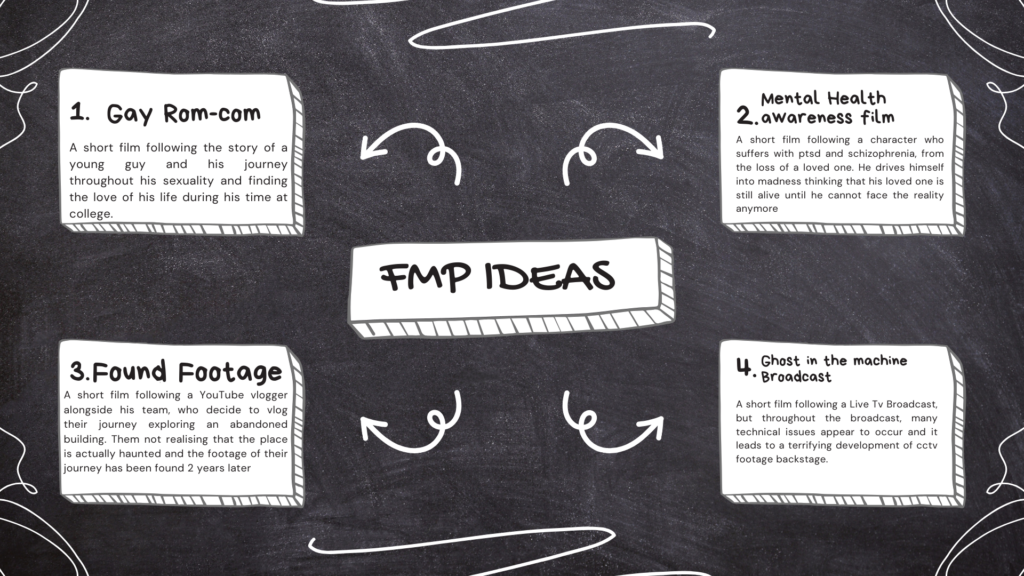
For this year’s Final Major Project, i had a few ideas floating around in my head.
Idea 1
The concept of creating a Gay Rom-Com came to me after being inspired by Netflix’s Heartstopper, which tells the story of two young boys exploring their sexualities and developing feelings for each other. I initially thought about playing the lead role myself and even considered narrating the film. However, I struggled to find someone to play my love interest – someone who would feel comfortable portraying my boyfriend, as well as someone I felt at ease with.
Idea 2
The idea for creating a mental health awareness film came to me while listening to music. The song “White Ferrari” By Frank Ocean sparked the concept for an emotional scene that i felt would fit perfectly within the theme of the film idea.
Idea 3
The idea for a found footage short film came to me because I’m fascinated by this genre. The film follows a group of YouTube vloggers as they explore an abandoned building.
Idea 4
The concept of a TV Broadcast gone wrong (a “ghost in the machine”) was inspired by the BBC show ‘Inside No. 9’, which featured a live Halloween special where the broadcast malfunctioned. I came up with this idea since I have access to the TV studio at college.
Final Idea Decision
I have decided to combine the TV broadcast idea with the found footage concept. The film follows footage from a live broadcast that repeatedly goes wrong, eventually cutting to YouTube vloggers who document their experience while exploring the abandoned TV studio.
Presentation

















Presentation Feedback
“You have highlighted three detailed ideas for you’re FMP project and have identified the pros and cons to each.”
“You’re explanation of how the footage will be considered found footage through the camera angles you use and the saturation in post production.”
“You have explained which skills you will work on improving and during the Q&A what you’re next steps are.”
“A recommendation would be to go into the TV Studio and test out what kind of set-up/additional kit you will and develop you’re character/plot for the project.”
Proposal
Research
Film Research
Understanding the challenges of film production can actually help transform ideas into finished films. It’s crucial to identify a character’s needs and to highlight their development.
Angle Shots
- High Angle – A high angle shot places the camera above the subject, making them appear vulnerable or powerless. Common in horror films, it creates a sense of dominance from the camera’s perspective and expresses emotions like danger or despair. This angle also offers a wider view of the scene, giving the audience a new perspective on the setting.

- Low Angle – A low angle shot is when the camera is placed below the eye line and looks upwards at a subject. This angle often gives the subject a sense of power and dominance. It can also make a typically strong character, like a hero, appear vulnerable, creating a more relatable connection with the audience. Low angle shots are frequently used to make objects appear larger and more imposing, exaggerating their size.

- Over the Shoulder – The over-the-shoulder shot is commonly used in films during conversations between two or more characters. It helps establish where each character is looking and is usually framed as a medium or close-up shot. This shot can also signal to the audience that a character is aware of something the others haven’t noticed yet. By adjusting the depth of field, you can guide the viewer’s focus to something in the distance that the character is observing.
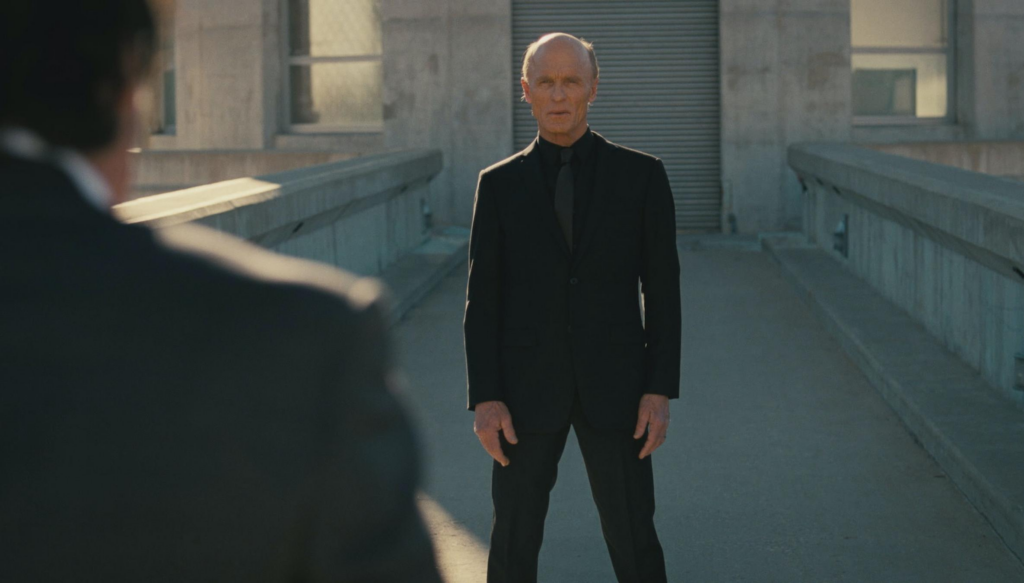
- Bird’s Eye – The bird’s eye view, or aerial shot, places the camera directly above the action, capturing everything below. Drones are often used for these shots, providing a wide perspective. They’re commonly used as establishing shots to set the location or transition shots to show the scene from above. They can also be captured from tall structures like bridges or skyscrapers.

Types of shots
- Wide shot – Wide shots capture within their environment, providing the audience with key information about who is in the scene, where it takes place, and when it occurs. They also reveal important details about the world in the scene, such as its setting and time period.

- Medium Shot – A medium shot captures the subject from a moderate distance, usually from the waist up, while also offering a clear view of their surroundings. This shot is adaptable and functional, ideal for scenes featuring a single character in their environment or multiple characters interacting with a new setting. Medium shots are perfect for showcasing movement in physical comedies, musicals, and action films. This allows them to capture how characters move with intention and energy.

- Close-up – A close-up shot is one where the camera fills the frame with an actor’s face or a key feature, detail, or object. The primary purpose of a close-up shot is to convey significance, visually signalling to the audience that what they’re seeing is important.
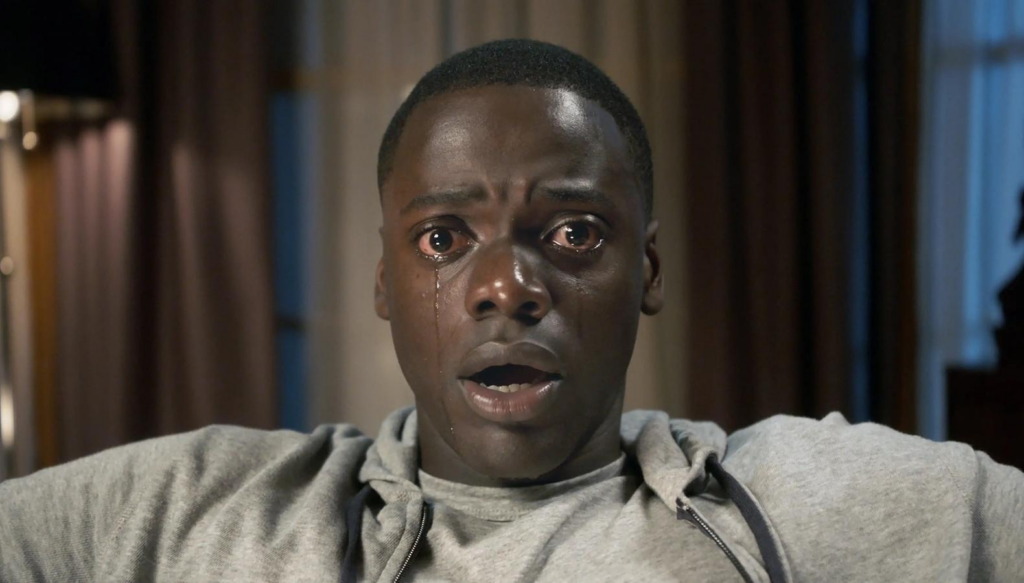
- Point Of View – A point of view (POV) shot shows a scene from the perspective of a particular character, effectively placing the audience in their shoes. The technique allows the viewer to see exactly what the character is seeing, giving a deeper connection to their experience. Directors often follow a POV shot with a reaction shot from the character, which helps express their emotional response to what they’ve just witnessed. This combination deepens the audience’s connection to the character’s emotions. A POV shot, also known as a subjective or first-person camera, mirrors the character’s perspective, creating an immersive experience.

Tracking Shot – A tracking shot involves the camera moving through a scene, following characters, highlighting action, revealing landscapes, or adding energy. Unlike panning and tilting, which rotate the camera on its axis, tracking shots involve physical movement. Stabilisation ensures smooth footage. These shots are often longer, packed with action or detailed visuals, requiring careful planning and coordination. A long tracking shot, in particular, can add a unique dimension to a scene, often becoming a standout moment in the film.
Equipment
Cameras:
The Sony FX3 – The Sony FX3 includes a 12.1 megapixel full-frame sensor with 15 stops of dynamic range for clear shots in any lighting. With an ISO range of 80 to 102,400, it performs well in varied conditions. It also includes two XLR inputs with 48V phantom power for professional audio.
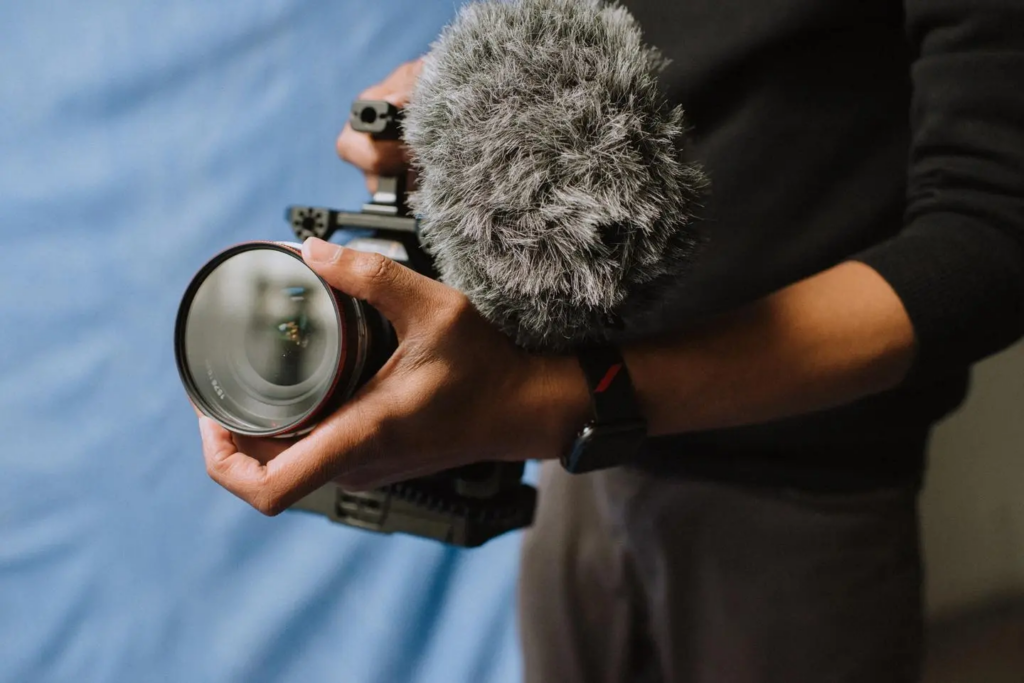
- Blackmagic camera – This camera offers Hollywood-quality visuals at an affordable price. It. features a bright touchscreen LCD, HDMI port for external monitors, mini XLR input for professional mics, USB Type-C for fast file transfers, and a full-size SD card slot for direct footage capture. It excels in planned shots with impressive image quality.

- Sony A7 IV – The camera features top-tier functions such as 4k recording, 120fps slow motion, and an advanced hybrid autofocus system for precise subject tracking. It also includes useful tools like Eye AF, Real-time Tracking, and a user-friendly menu. While 4k 24fps performed flawlessly for over and hour under hot lights and handled warmer, humid conditions without problems.
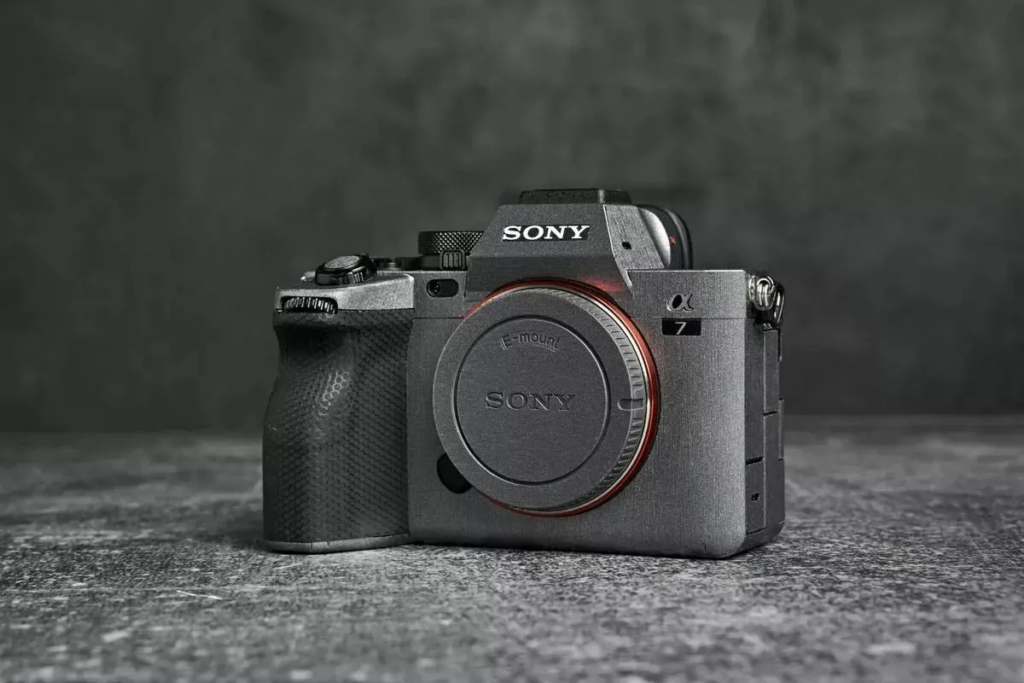
- Fujifilm’s X-H2S – The Fujifilm’s X-2S combines a vintage look with modern sensor power, offering 6.2k 30p recording, internal10-bit 4:2:2 Apple ProRes, and external RAW formats for great flexibility. It holds up well under heavy grading, delivering a film-like texture similar to Blackmagic sensors. While there’s some rolling shutter, the fast readout speed minimises distortion. Fujifilm’s autofocus is strong for stills but less reliable for video, tracking faces, animals, and vehicles, though it doesn’t quite match Sony’s system. It’s perfect for casual use but might not be ideal for high-stakes professional shoots.
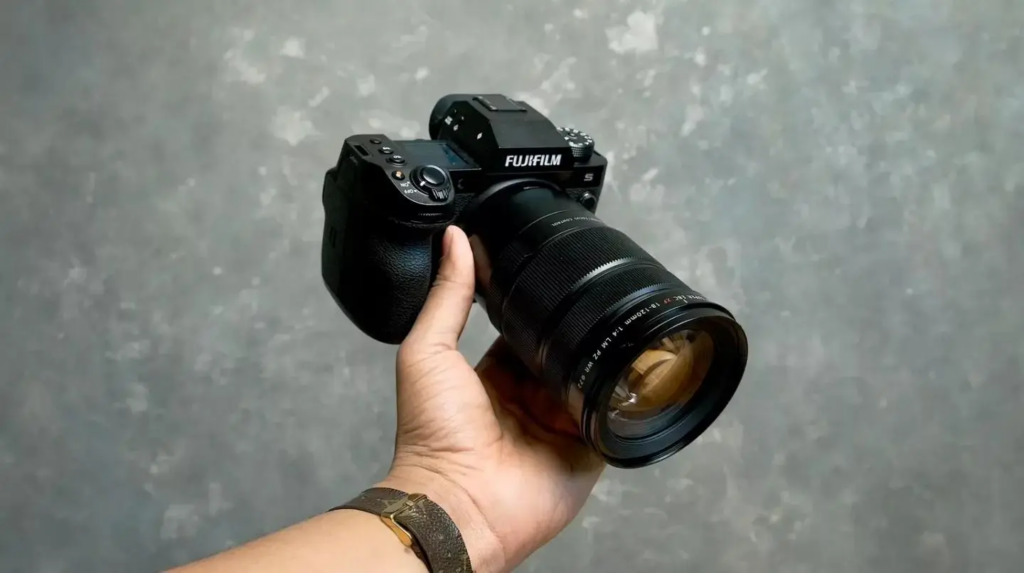
- Sony ZV-E10 II – The Sony ZV-E10 II features a 26MP sensor, which, delivers strong performance when paired with the right lens, especially for 60fps indoor shots. Its APS-C format requires more space for wide lenses, and the in-body stabilisation crops the frame. This camera also offers Full HD 1080p at 60fps and oversampled 4k to 6k, plus a user-friendly touchscreen, built-in Wi-Fi, and easy live streaming to platforms like YouTube.
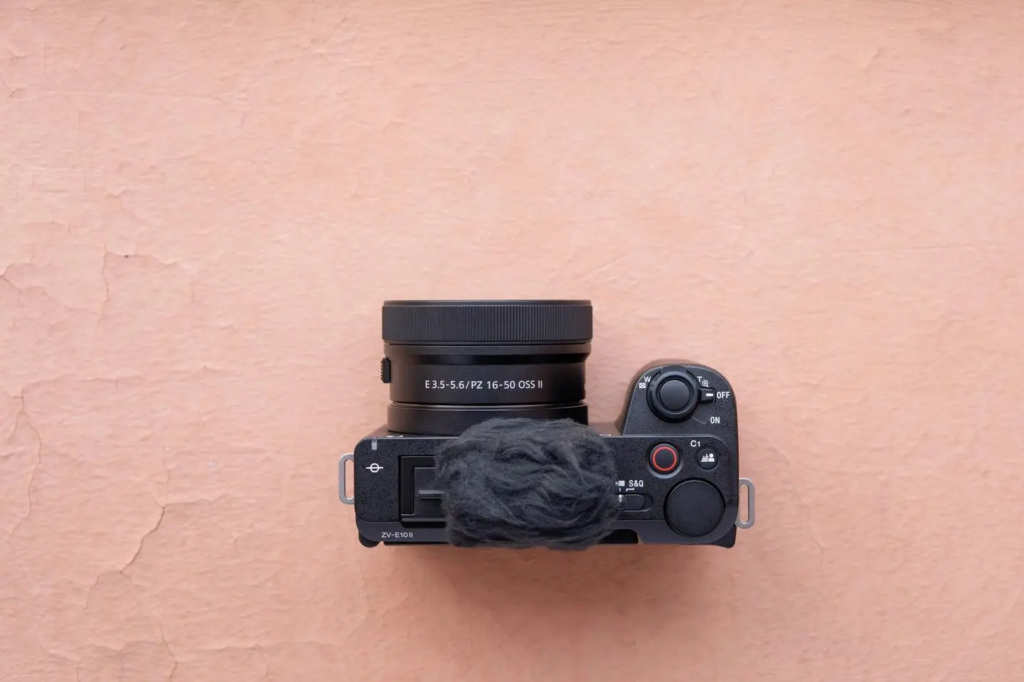
- Canon EOS R5 C – The R5 C stands out by avoiding overheating issues, which is huge advantage for long shooting sessions, especially compared to Sony’s temperature problems. It encourages manual shooting and provides advanced features RAW and 8k recording, as well as improved 4k via compressed 8k. It’s tailored specifically for videographers.

Microphones:
- Boom – This microphone is typically used as a directional mic, capturing sound from the font and minimising background noise. It’s ideal for film productions where the microphone needs to stay close to the subject without being visible in the frame. This mic is commonly used by news reporters filming in public settings, allowing them to capture clear audio without disturbing the surrounding environment. The extendable boom adds flexibility, making it easier to position the microphone at difficult or awkward angles to ensure optimal sound capture.

- Shotgun Mic – A shotgun microphone delivers significantly better audio quality compared to the built in microphones on DSLRs. It compact design makes it easy to transport and use, especially in situations where space is limited. A shotgun mic can be mounted on a boom pole, offering flexibility in capturing audio from different angles. One of its standout advantages is its durability, ensuring it can withstand the demands of various filming environments. Additionally, it’s adaptability allows it to be used in a wide range of scenarios, from indoor shoots to outdoor locations, making it a reliable and essential tool for filmmakers.

Soundtrack:
Soundtracks are emotional backbone of a film, flowing through scenes and dialogue to elevate the story. They create a deeper connection between the audience and the narrative. Music expresses emotion and emphasises key moments in ways words often can’t. A well designed score can transform a simple scene into something powerful, leading viewers on a deeper emotional journey.
Producers:
Producers guide projects from concept to completion. They identify creative opportunities, acquire scripts or story rights, and secure financing from studios, investors, or distributors. Producers are responsible for assembling the right team, including the director, cast, and crew, while managing the production’s budget, schedule, and overall vision. Producers guide the project to completion, balancing creative goals with practical demands to bring the story to life.
Lighting:
Lighting plays a crucial role in filmmaking, shaping how a story feels and looks on screen. It goes beyond basic illumination by setting the mood, emphasising characters, and enhancing themes. Elements like colour temperature, intensity, and direction can suggest time of day, highlight different environments, and trigger emotional responses.
Cinematic lighting:
Cinematic lighting is a creative lighting style used in filmmaking to build atmosphere, add depth, and enhance emotional tone. A key part of achieving this look is manipulating light contrast, such as making the subject brighter than the background to guide the viewer’s focus.
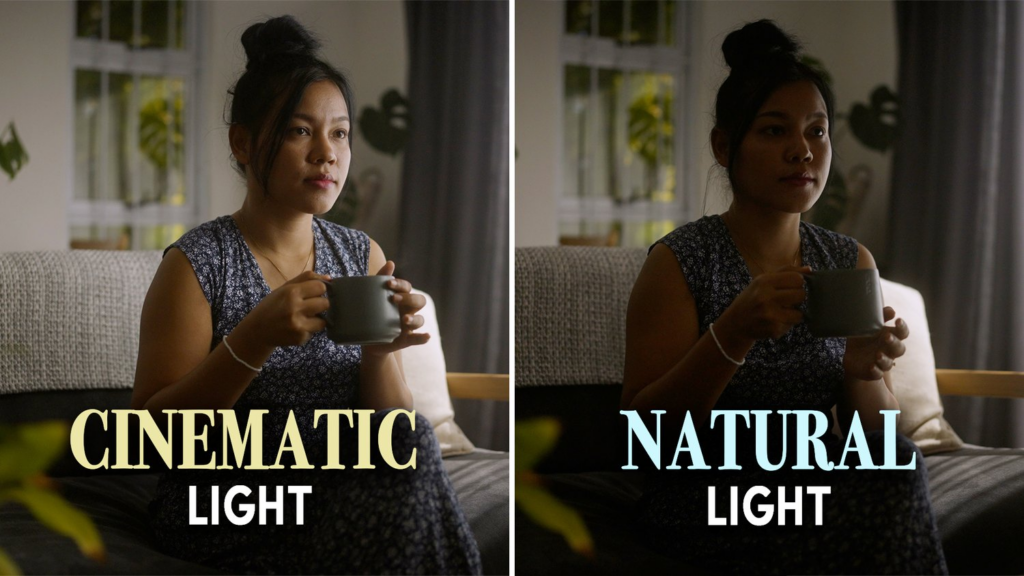
Three point lighting
Three-point lighting is a technique in film and photography that uses three distinct light sources to properly illuminate a subject while adding depth and dimensions to the scene. This method helps achieve a balanced, professional look by controlling shadows and highlights.
Key Lighting – The key light is the dominant and brightest source, responsible for defining the subject, and shaping the scene’s overall exposure. This creates natural shadows on the opposite side of the face, adding depth and form.

Fill Lighting – The fill light is placed on the opposite side of the camera from the key light and serves to reduce the shadows cast by the key. It helps reveal details hidden in shadow and brings balance to the lighting setup. Its intensity is adjusted to influence the overall mood – darker fills create high contrast and dramatic effects, while brighter fills result in a softer, more even look. The fill light doesn’t have to be an actual light, it can also be a reflector, wall, or bounce card that redirects light onto the subject.

Back Lighting – The backlight is the third and final element in a standard three-point lighting setup. It is placed behind the subject to create a subtle glow along the edges, usually around the head and shoulders. This light helps define the subject’s shape and separate them from the background, adding depth and a more cinematic fell to the scene. Typically, the backlight is positioned high and behind the subject, angled down to stay out of camera’s view while enhancing the overall visual clarity and focus.

Directors:
Directors lead the creative vision of a film, turning the script into a compelling visual narrative from pre-production through to the final edit. Hired by the producers, they may also take part in writing or editing the script. Once the project is funded, they help recruit key crew members and collaborate on casting, visual style, and rehearsal planning. Directors are responsible for guiding actors’ performances and ensuring all technical elements, (such as lighting, costumes, and makeup) align with the film’s vision.
Inspiration
“Followed”

My main inspiration for this project comes from Followed, which tells the story of a YouTuber and his team who stay at a haunted hotel in hopes of securing a sponsor for their channel. As they spend a week there, strange and unexplainable events unfold around them, which they capture on film as the nights go by.
‘Inside NO.9’
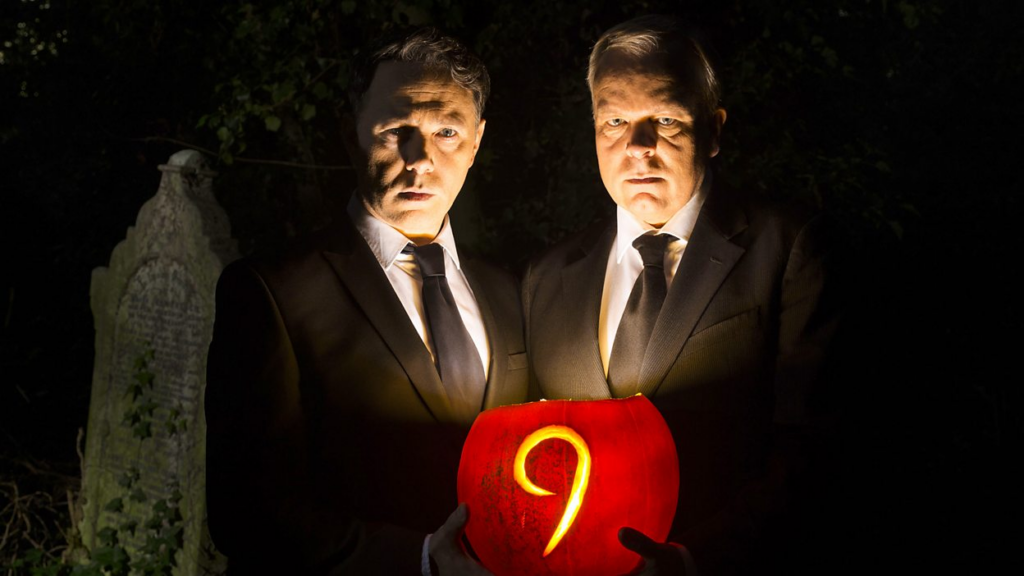
Inspiration for this project also comes from the Inside No.9 Halloween Special episode: ‘Dead Line’. In this episode, a live broadcast of the show is interrupted by technical issues, causing the audio to cut out. Unable to air Dead Line, the studio instead replays a previous episode of Inside No.9.
During this repeat, the ghostly figure of an elderly woman appears in the background of one of the shots.

This particular shot sparked a lot of ideas in my mind, and now I’m considering a scene with a ghost that is clear and visible in the frame. I think this is effective as it brings out the sinister atmosphere and bring attraction and attention to the audience.
‘Paranormal Activity’
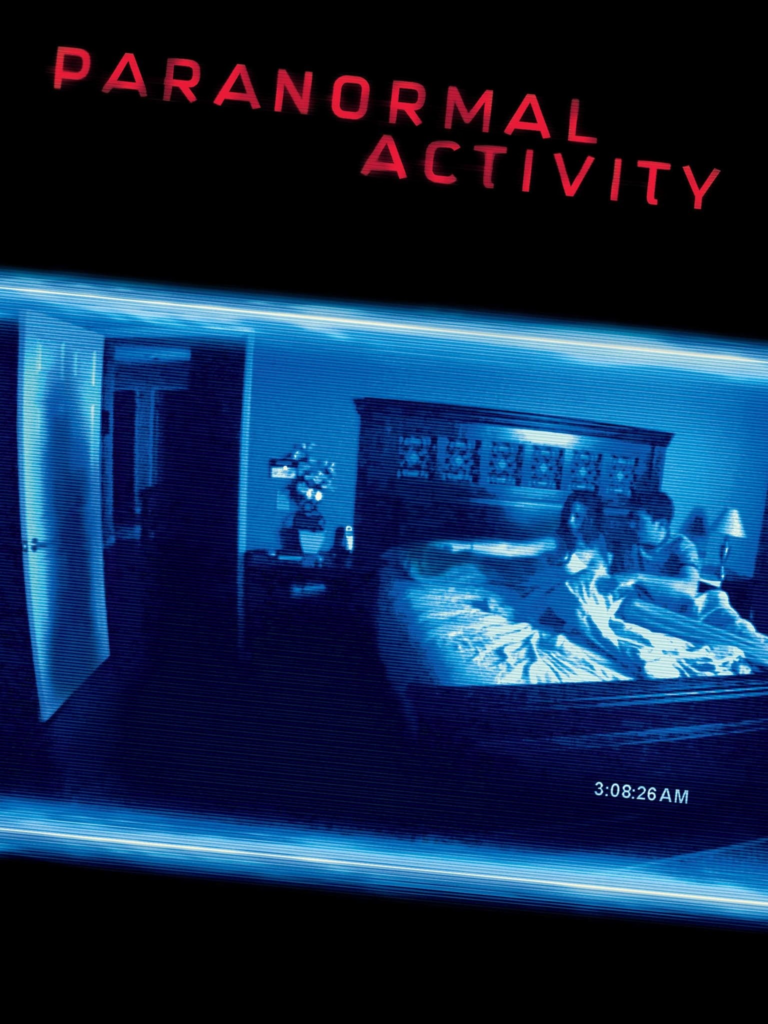
The inspiration for this project comes from Paranormal Activity, particularly its use of the found footage format. This movie franchise creates a sense of realism by having characters interact with the camera while documenting their daily lives. But whilst they are documenting their lives, they catch something unusual.
In every film in the Paranormal Activity franchise, there’s a closing scene where the main character, usually searching for their family or friends, ends up being chased by the entity that has been haunting them throughout the film.
Examples
For my film, I plan to use the perspective of a Mac screen to tell the story, focusing on the main character’s YouTube channel. This format is intended to give a found footage feel, as if the footage is being uploaded to YouTube from files stored on the Mac.
The inspiration for this comes from the film ‘Nerve’. Its opening scene uses a similar visual approach, with dynamic zooms and scaling that follow the mouse as it moves across the Mac screen, clicking on different apps and locations within the Mac.
Pre-Production
Script
Cast
Leon Whiting as Frank
Isobel Gregory as Vi
Niall Murphy as Johnny
Brodie Senior as Maxine
Madi as ghost of Emily Grimshaw
Karly Ashworth as Ebony Macdonald
Henry Mulligan as Dexter Manning
Camera Crew
All the cast will be using cameras and recording them to give the effect of a POV found footage production.
Location planning
Filming will be placed at college, in the photography studio. This is beneficial as i will be filming during college hours.
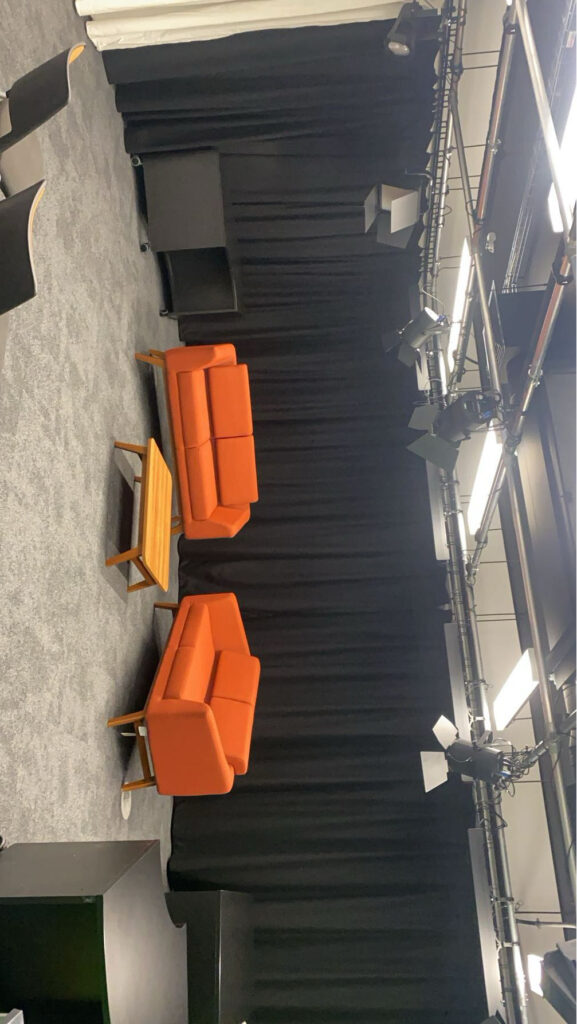
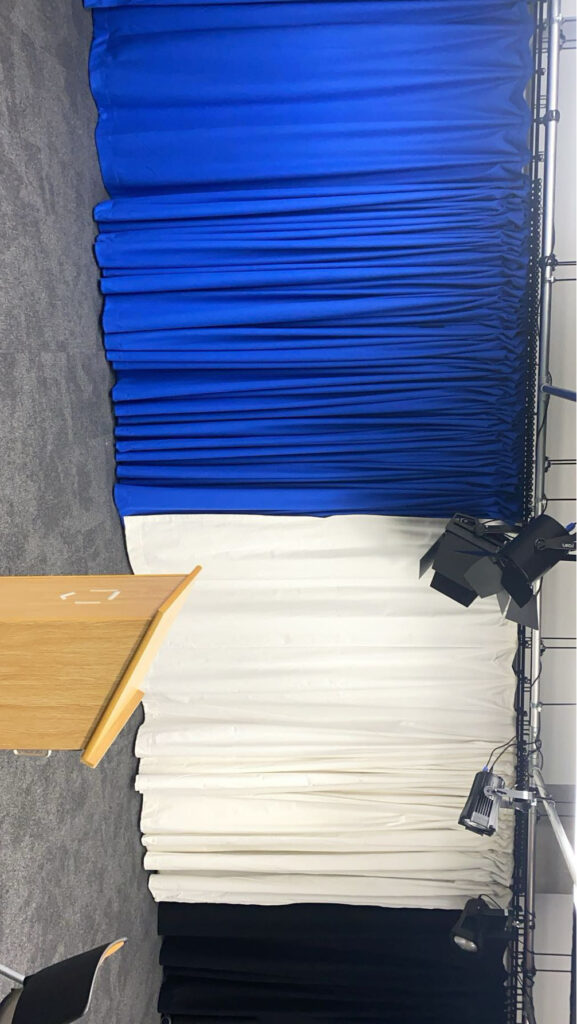
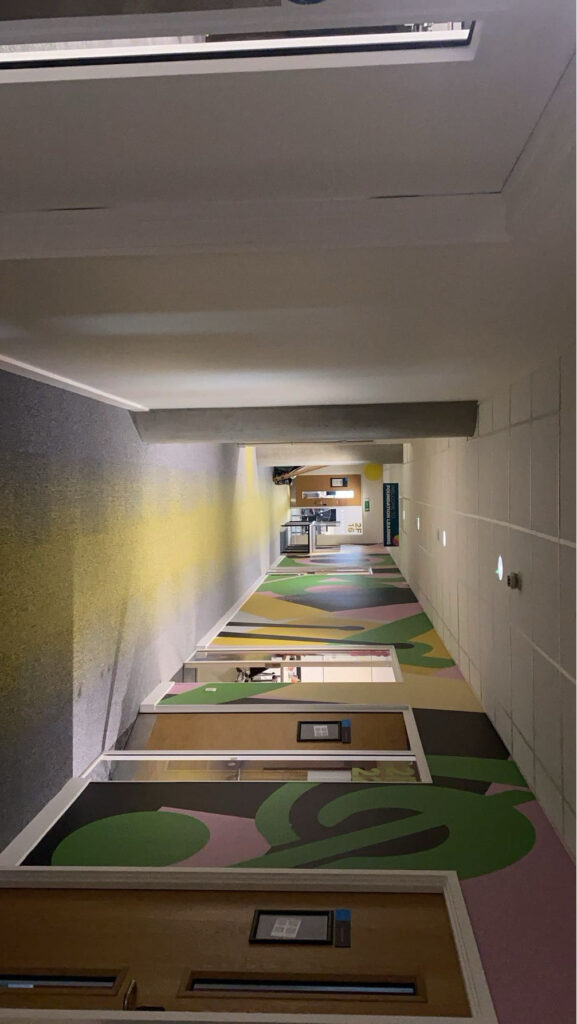
Equipment
Cameras
Tripods
White Sheets
Eye contacts x2
Fake Blood
Fake Plastic Knife (maybe)
Collaborations
I’ll be collaborating with individuals from a range of college departments, such as creative media, music, performing arts, and media makeup. This will give me the opportunity to work across different disciplines, share ideas, and combine our expertise to create something unique and impactful.
Planning
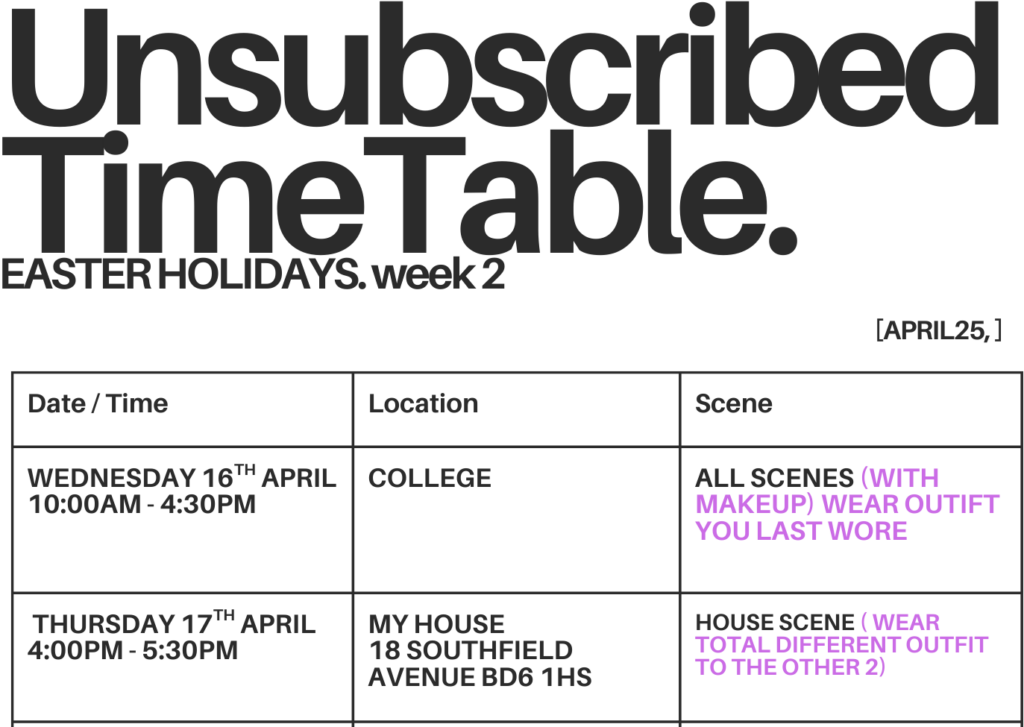
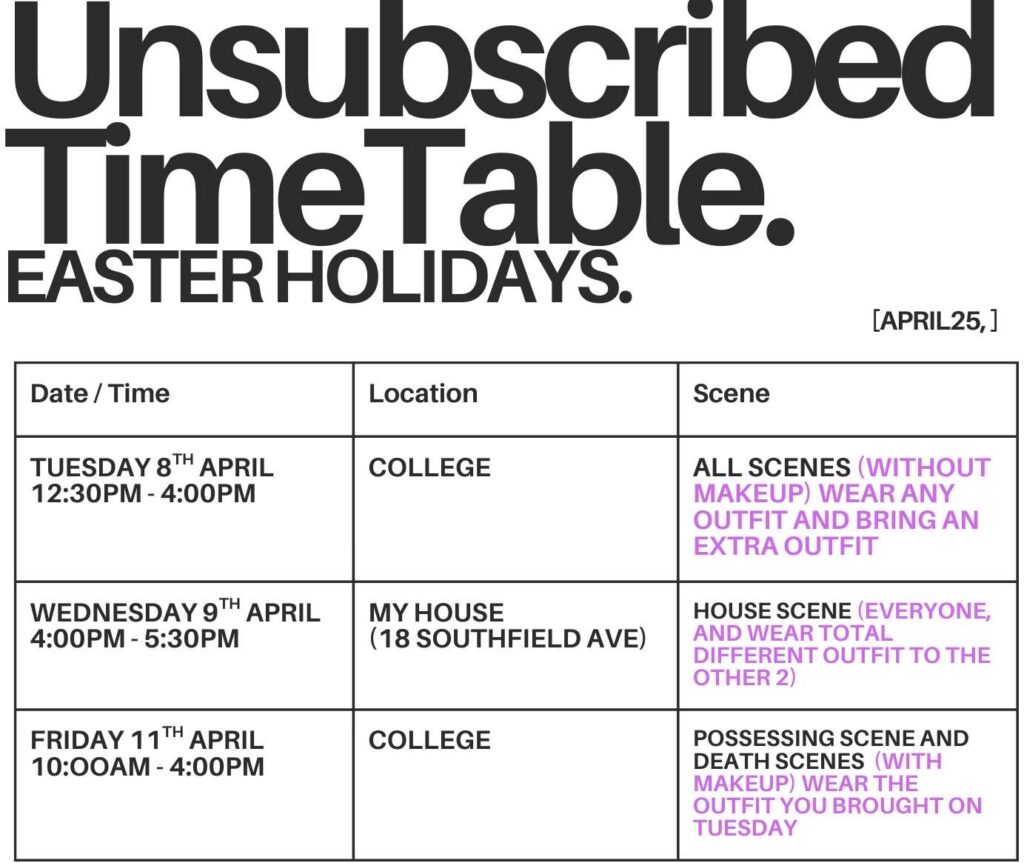
Production
Week One:
For filming i had booked out the cameras a week prior to filming and left them in the TV Studio ready for us to use.
I had planned to bring plain white sheets to cover the cameras and furniture in the Tv Studio to create an abandoned atmosphere. Unfortunately, i left them at home, so when we arrived, we improvised by turning the sofas on their sides to give the studio that deserted, neglected look.
The cameras were working perfectly fine, but on of them did not have a lens on it and there was no visual showing on the camera so we used the studio cameras and one of the Sony cameras.
We carefully followed the timetable that i had created by filming all the scenes that didn’t require makeup in a single day during the first week. This approach helped us stay organised and efficient. Then, the following week, we dedicated another full day to shoot all the scenes that involved makeup. Splitting the filming like this allowed us to focus on each set of scenes separately, ensuring everything was done smoothly and on schedule. Every actor involved were very reliable and on time on set, with no last minute cancelling, which relived my stress, helping me focus more on the actual production, which made everything run a lot more smoother and quicker compared to my past projects with collaborating with actors.
Week two:
For the second week, we met again at college, wearing the exact same outfits as before to maintain continuity. When we arrived at college, we encountered an issue as security wouldn’t let us into David Hockney Building. I contacted Em via Teams, and she reached out to Sam from Central Media, who then came down to let us in. Once we got to the Tv Studio, we had some time to spare as one of our main actors, Brodie, was running late. During the wait, Izzy and I had our makeup done by Sophie, a media makeup student, to give us a possessed look. We used this time to film my possession scene while waiting for Brodie to arrive.
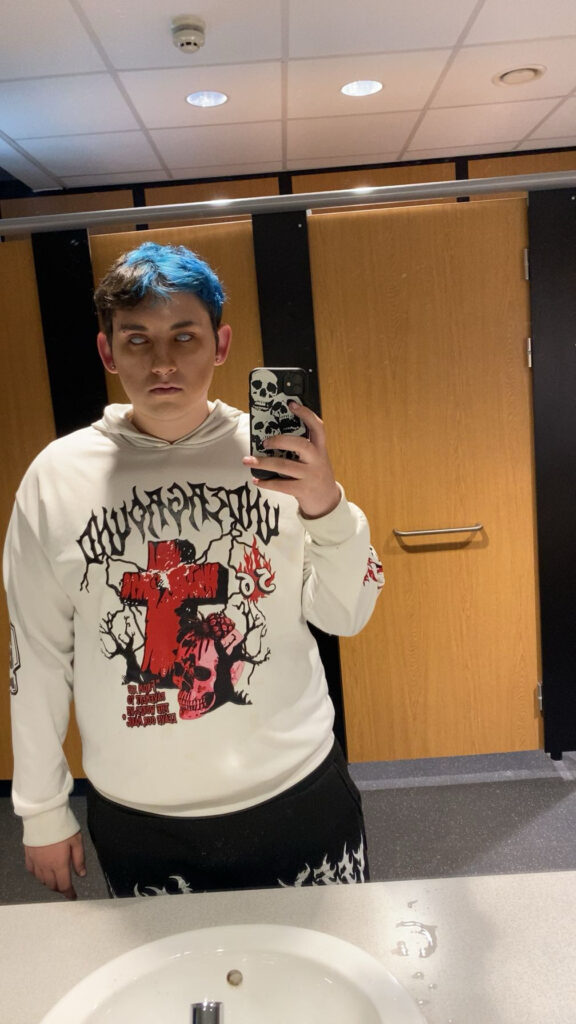
Once Brodie arrived, we wasted no time setting up the cameras and getting started up on the Oujia scene. To add a sense of realism, we used Brodie’s own Oujia board, which added an authentic touch to the filming. Knowing the nature of the board and its associations, we were all very cautious throughout the process. After wrapping up the scene, we made sure to follow the proper steps to say goodbye to the board, as a way to respectfully close any potential spiritual connection and avoid inviting anything unintended. Throughout filming, the camera died and i tried to charge it beforehand, but we didn’t have enough time to wait for it to charge at its full capacity, so when it had died, i had to then switch to using Izzy’s Iphone 15, which had a good source of quality. This was beneficial in the end up, as Brodie and Niall were filming on there phones.
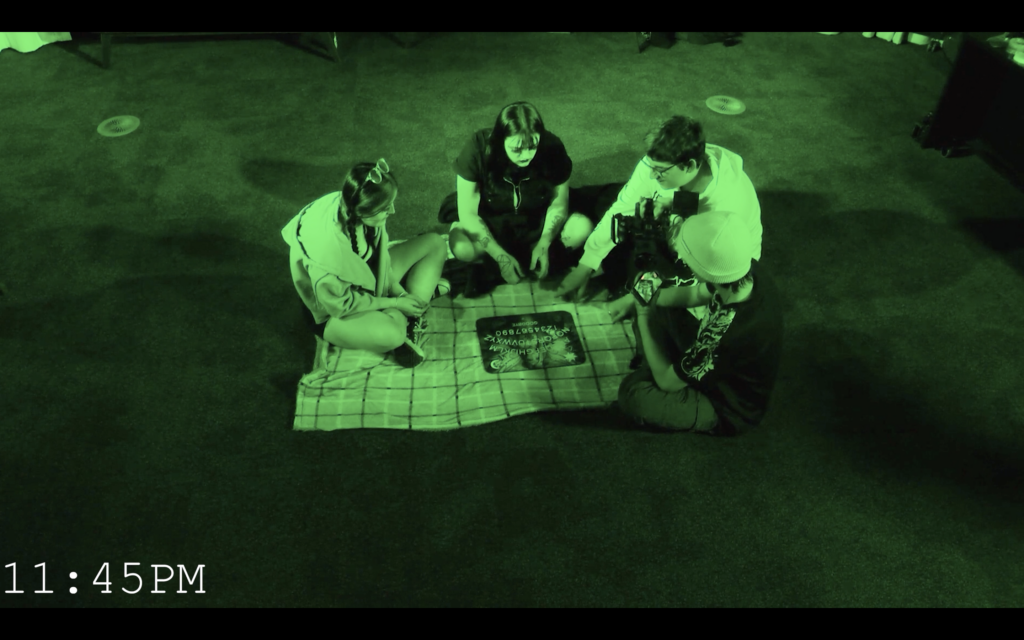
For the death scenes, Karly and Sophie from media makeup team applied special effects makeup to Izzy, Niall, and Brodie to make them appear as though they had been brutally murdered. They used scar wax to create a realistic slit across Izzy’s throat.
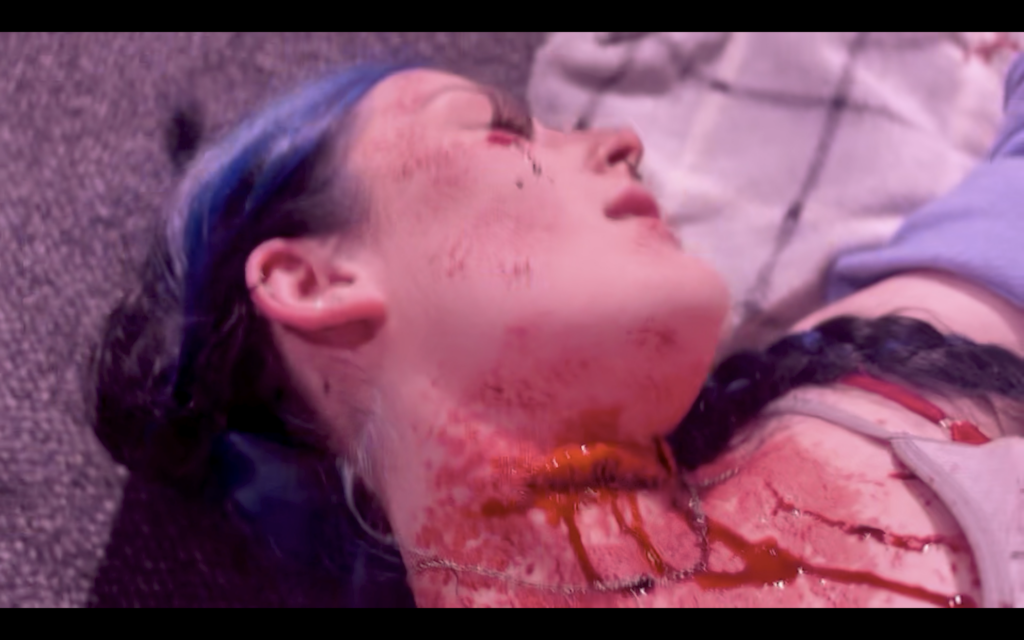
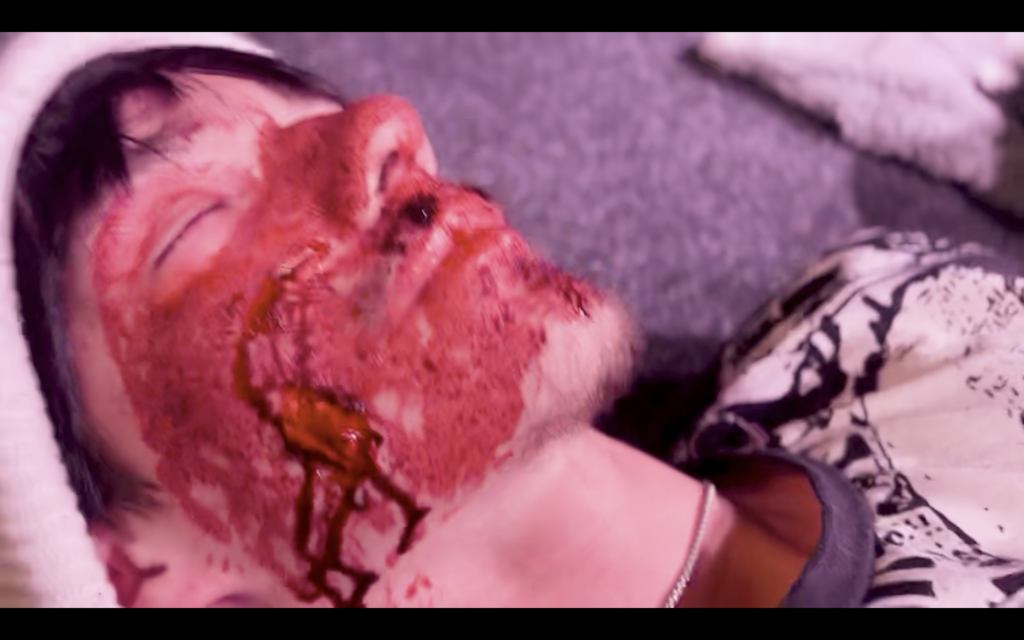
Throughout filming, Karly was responsible for managing the lighting setup, adjusting the colours and settings based on my cues during each scene. Her role was crucial in helping achieve the visual atmosphere we aimed for. For most of the scenes, I instructed her to keep the lights green in order to replicate a night vision effect, which added intensity and enhanced the eerie tone of the film.
Week Three:
After the Easter holidays, I filmed with Henry in the TV Studio to shoot a segment for the Dexter Manning TV show, a character from his previous FMP short film, ‘Supernova’. I chose to include this in my film to highlight the supernatural events taking place within the Channel 4 studio and to show how these spirits interfere with live broadcasts. I asked Henry to reprise his role as Dexter Manning to create a sense of continuity between projects produced within the Bradford College Creative Media course.
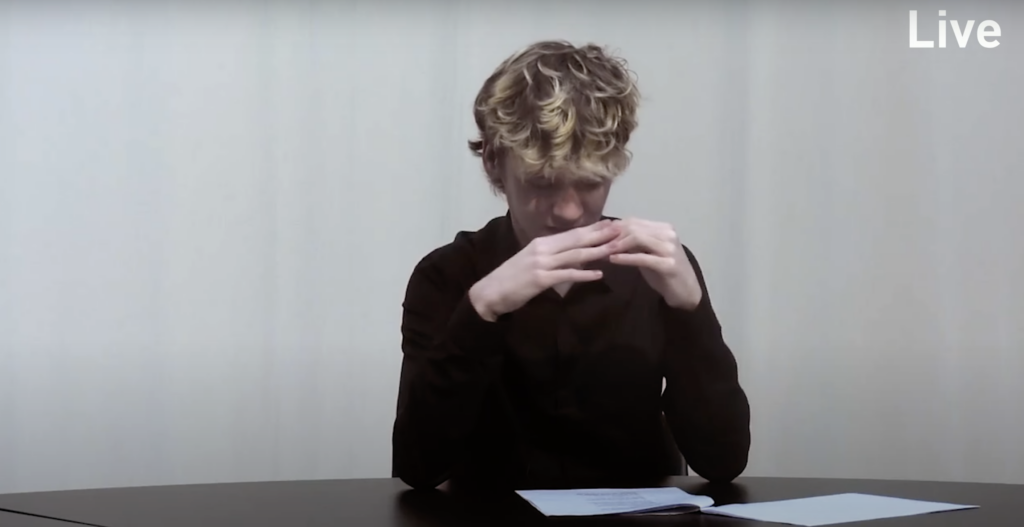
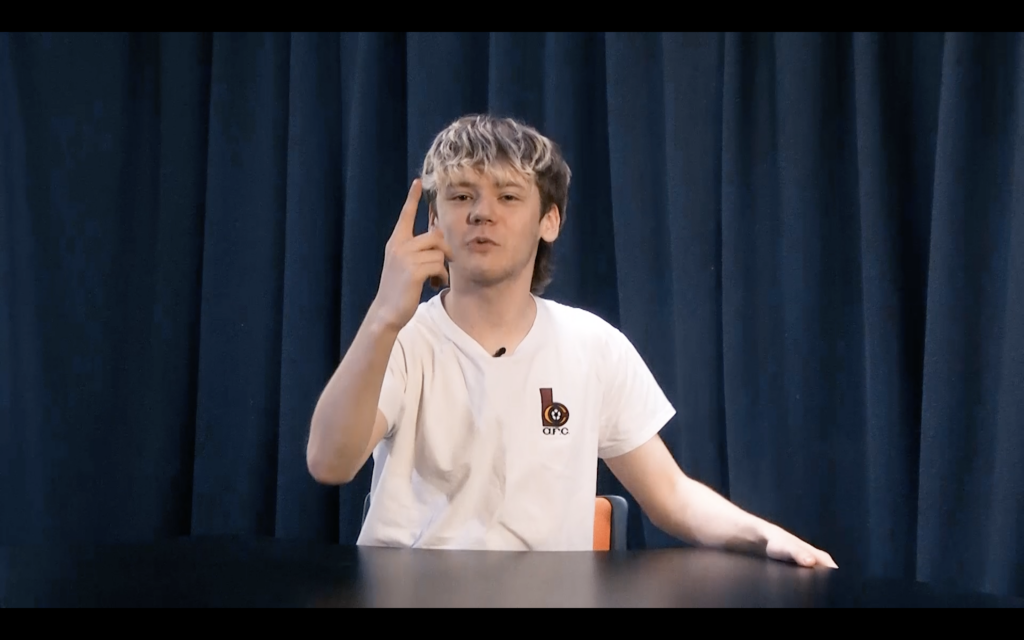
We made full use of the TV Studio facilities to shoot the scene, with Hannah managing the live camera switches during the recording.
Later, I asked Em to provide the voice of the TV presenter for the Channel 4 idents and the technical difficulties screen. We recorded her voiceover in one of the college’s mixing suites.
I created a fake YouTube Channel for my character ‘Frank’ and called it ‘FrankInTheOcean’, which i had then started to film my own short YouTube videos to then post on this YouTube Channel.
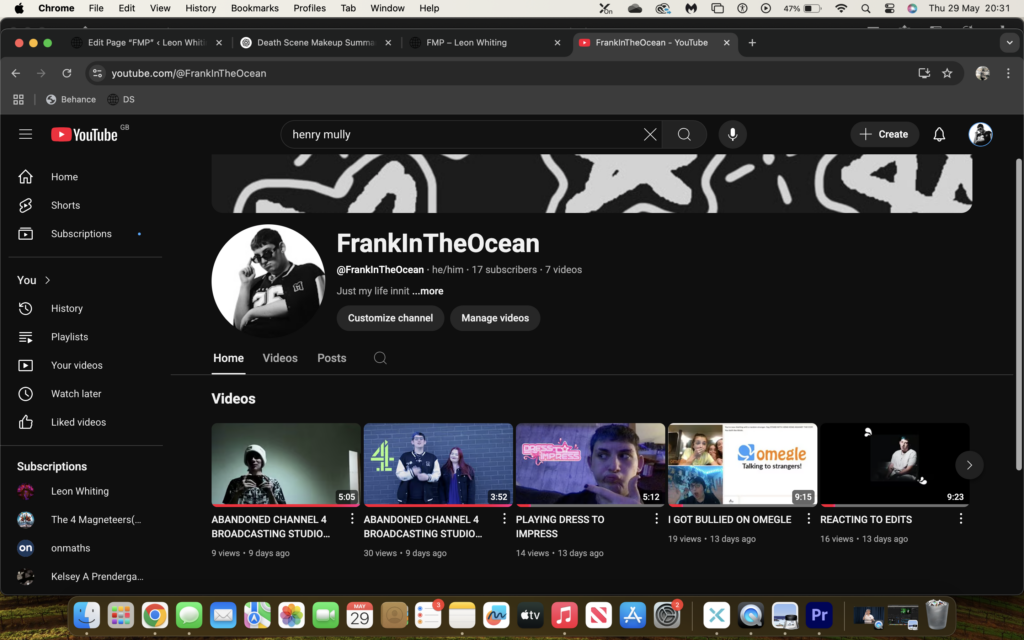
I also created a fake merchandise website using ‘Canva’, to then add this into a video where ‘Frank’ explains how it works and the prices.
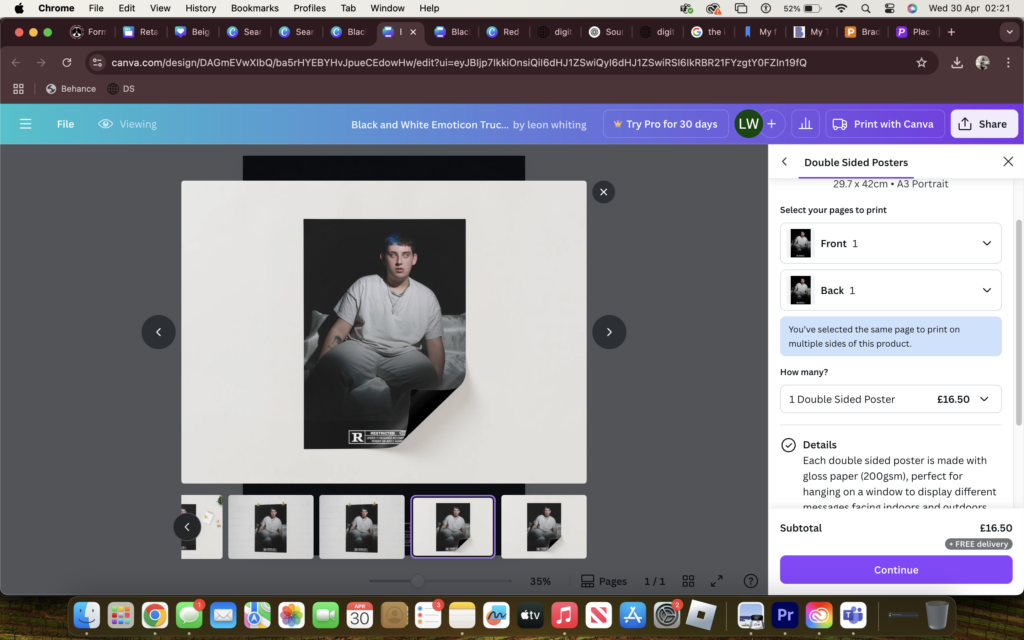

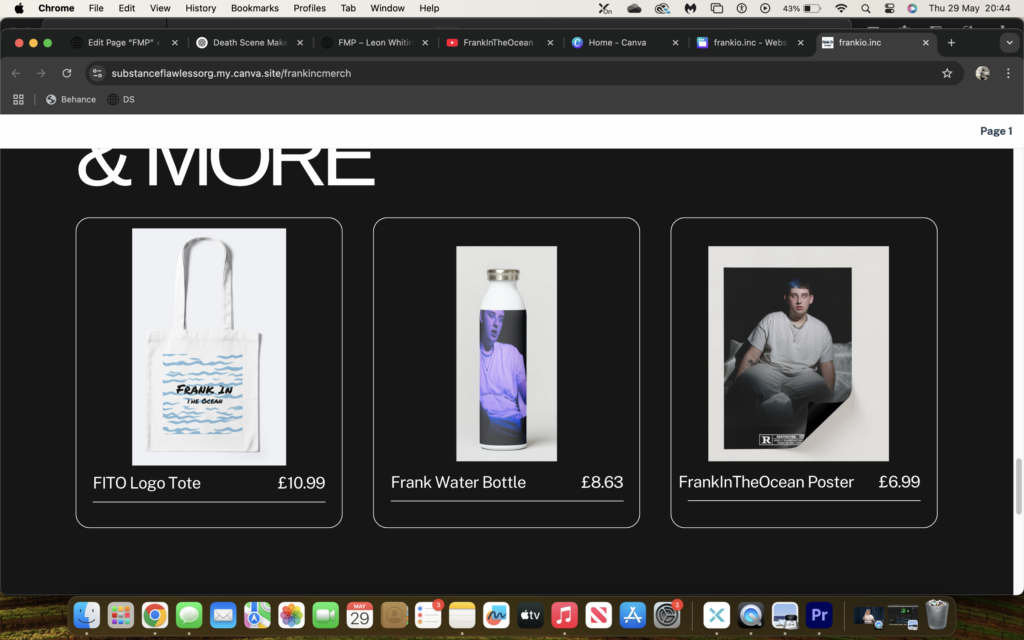
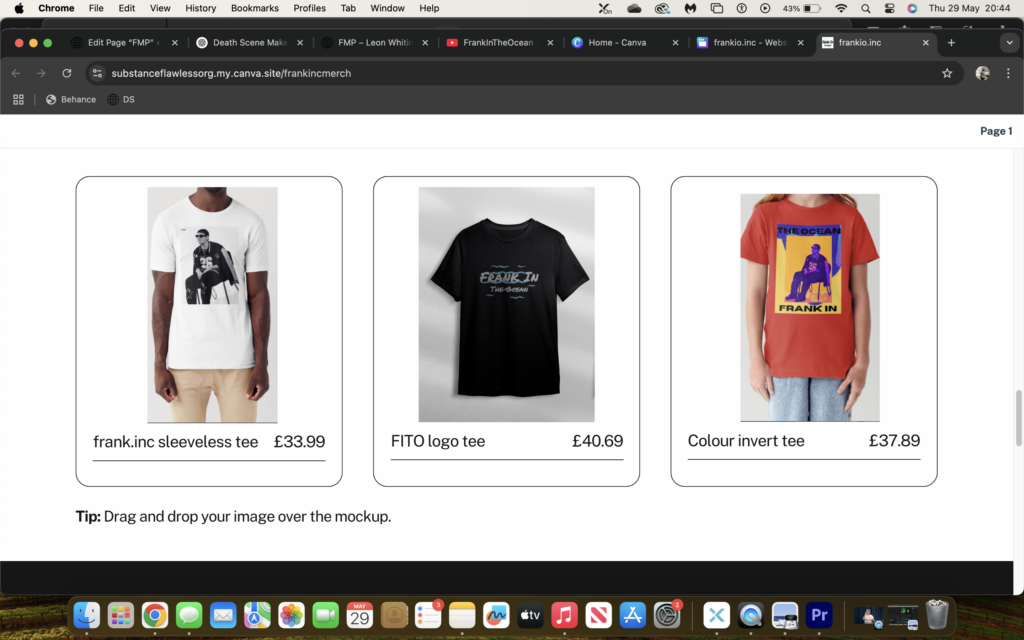
https://substanceflawlessorg.my.canva.site/frankincmerch
Editing
I decided to edit the film in separate Premiere Pro projects, breaking it into parts that aligned with the film’s structure as i went along.
Before starting the main film edit, i focused on editing the short YouTube videos i had made, which i then uploaded to the dedicated YouTube channel I created for my character.
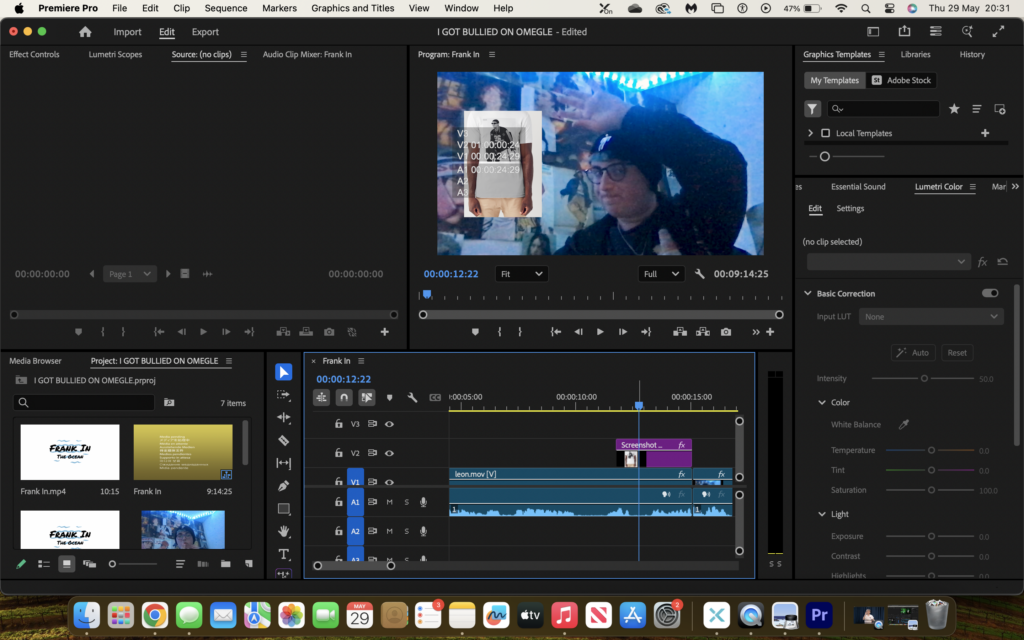
For my first editing project for the main film, i chose to work with the footage from the first week of filming.
I turned it into a YouTube vlog, adding my ‘FrankInTheOcean’ logo, that i had designed in ‘Canva’, at the beginning of the video.
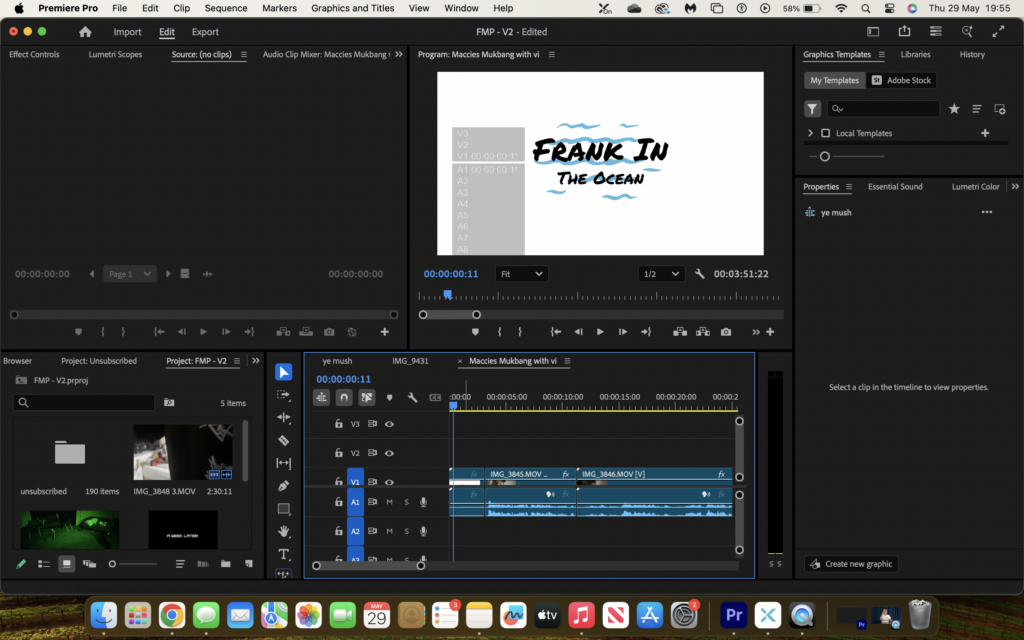
I then added static noise onto the logo as all the youtube videos have, to create the illusion of my character ‘Frank’ as a proper YouTuber.
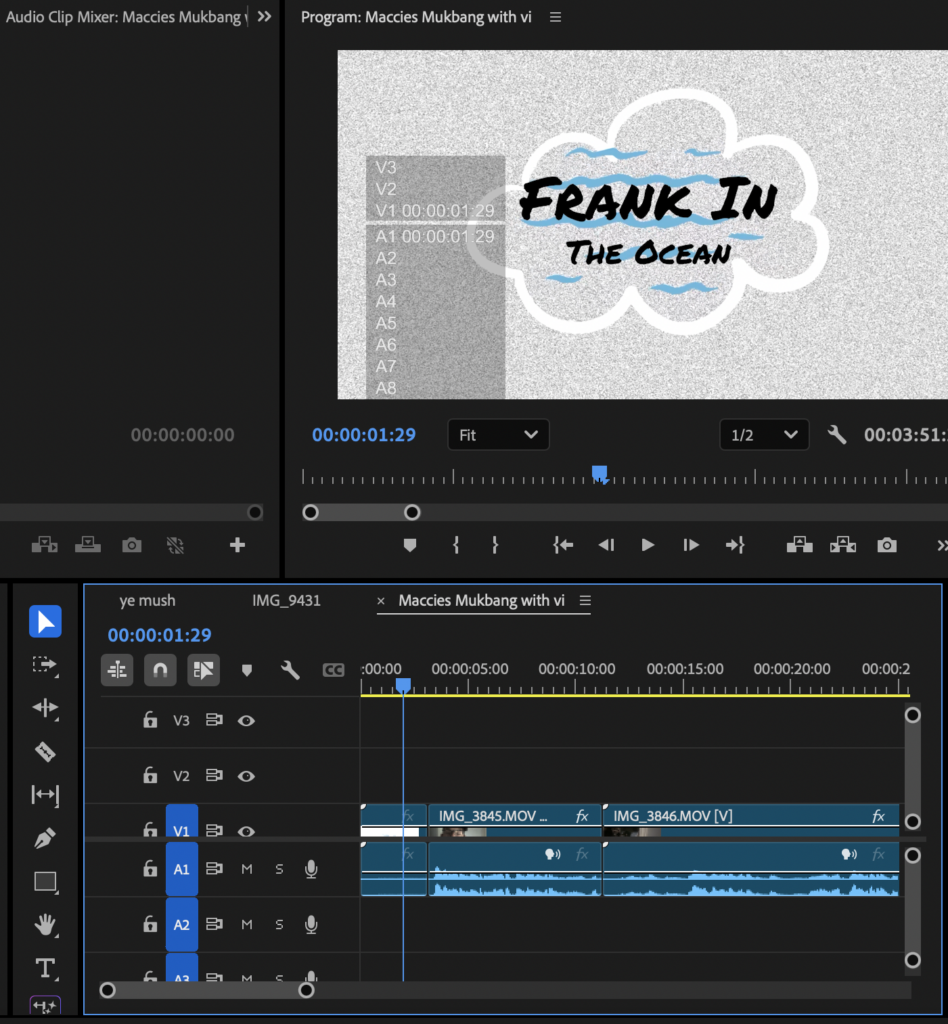
I encountered a few audio issues, as I initially thought the camera was recording sound during filming. To resolve this, I used audio from the mics that Izzy and Niall were wearing and increased the audio gain to 10 to make my voice clearer. While this improved the audio, my voice still wasn’t very prominent in the clip. However, I chose to leave it as it was, since the imperfect audio added to the glitchy aesthetic i was going for.
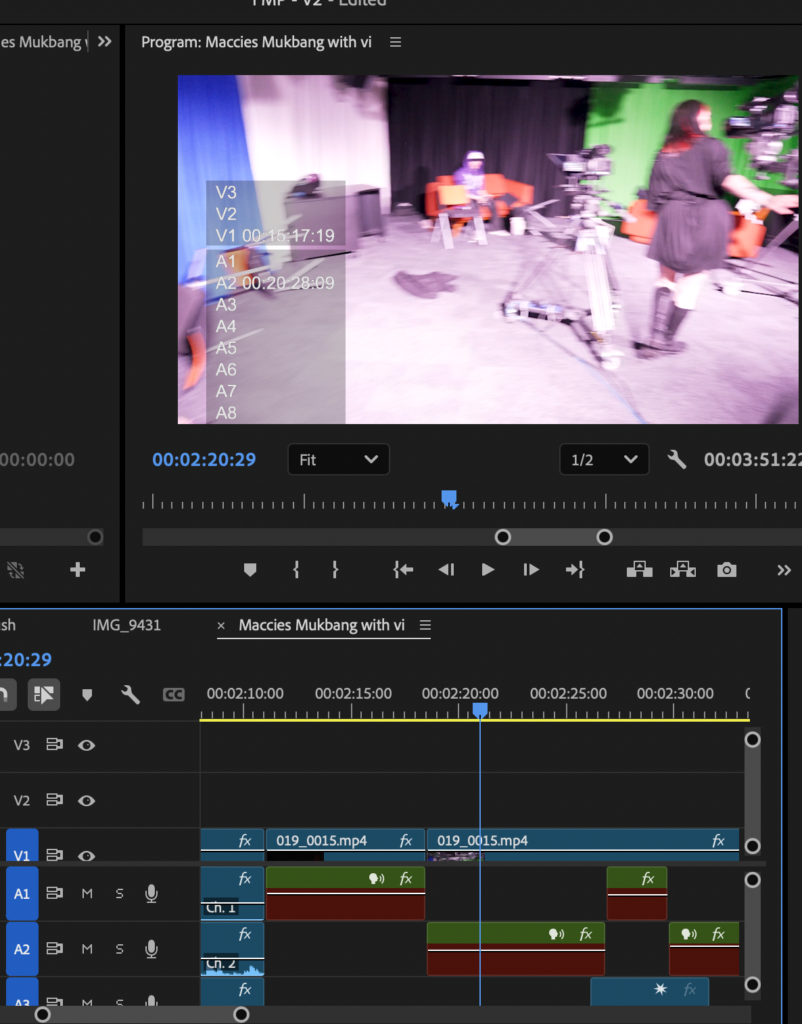
For the scenes using the green lights i added the auto-correction feature and turned the intensity up to 100, to bring the night vision effect more life.
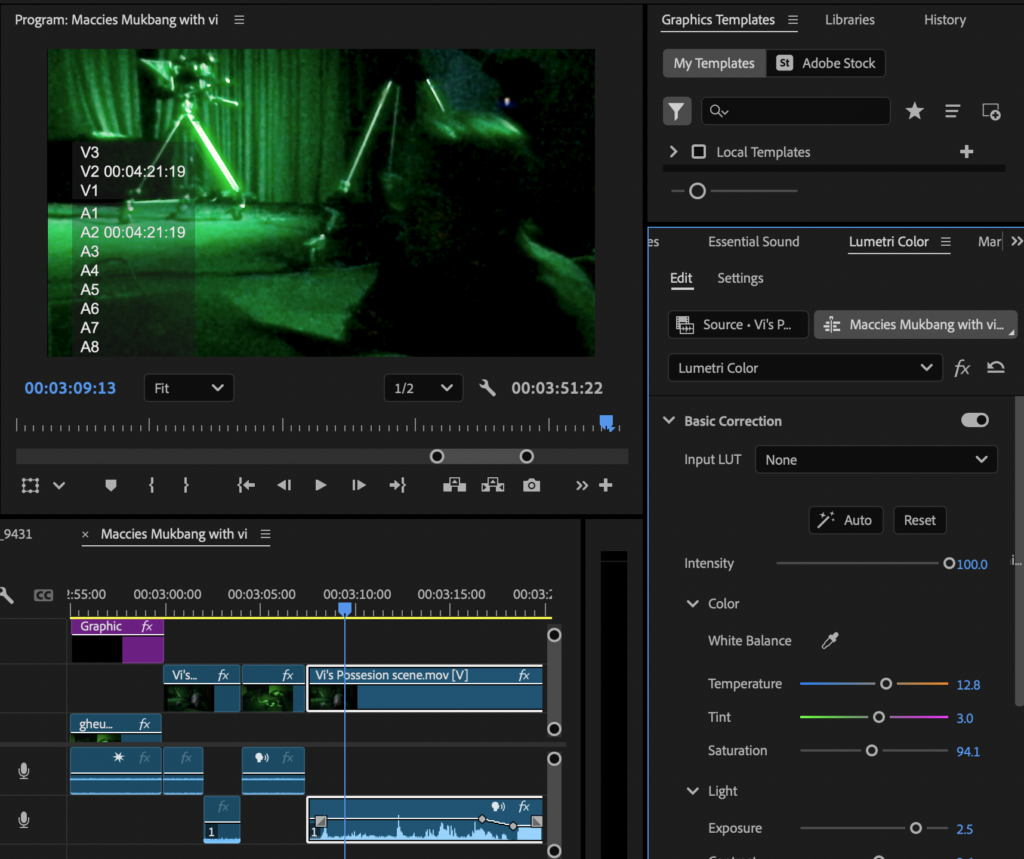
For the second editing element, i edited “video 2”. Editing this, i had made sure every clip was was the same auto corrected colour grade.
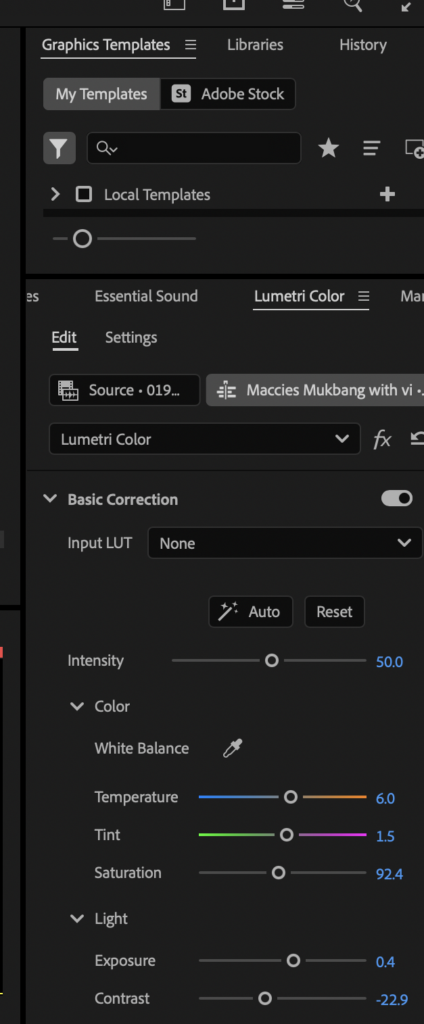
This is where I encountered an issue, as the main camera died mid scene , i had to switch to using an IPhone. The difference in video quality was quite noticeable.
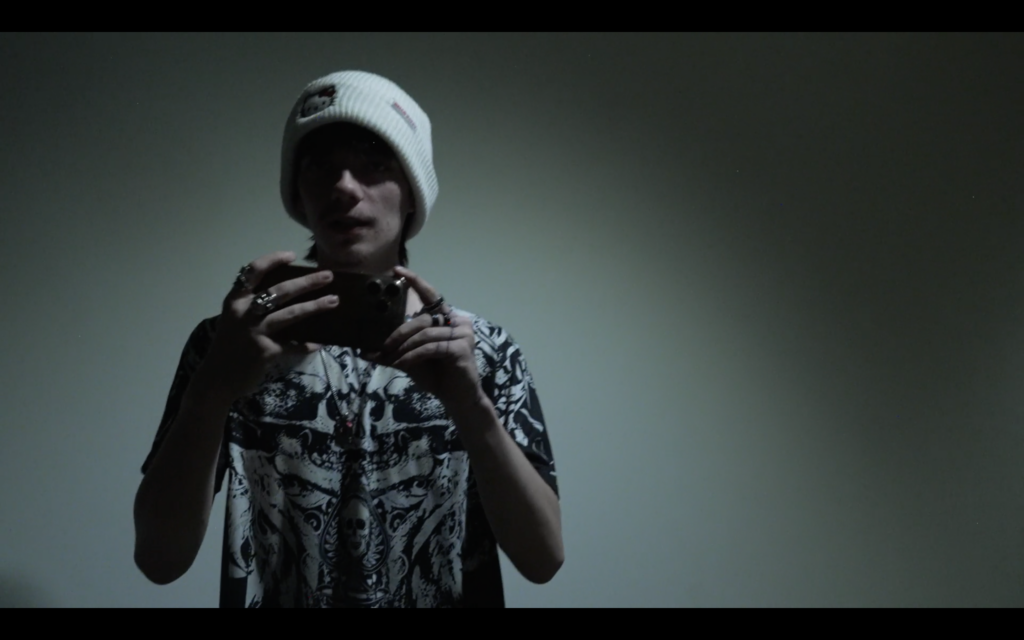

I resolved this issue by applying custom colour correction, adjusting the grading to better match the quality and look of the original camera footage.
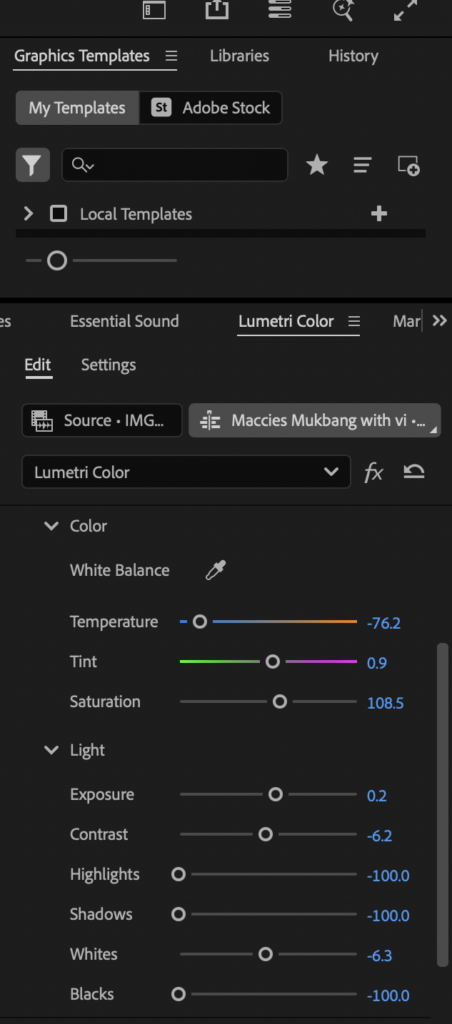
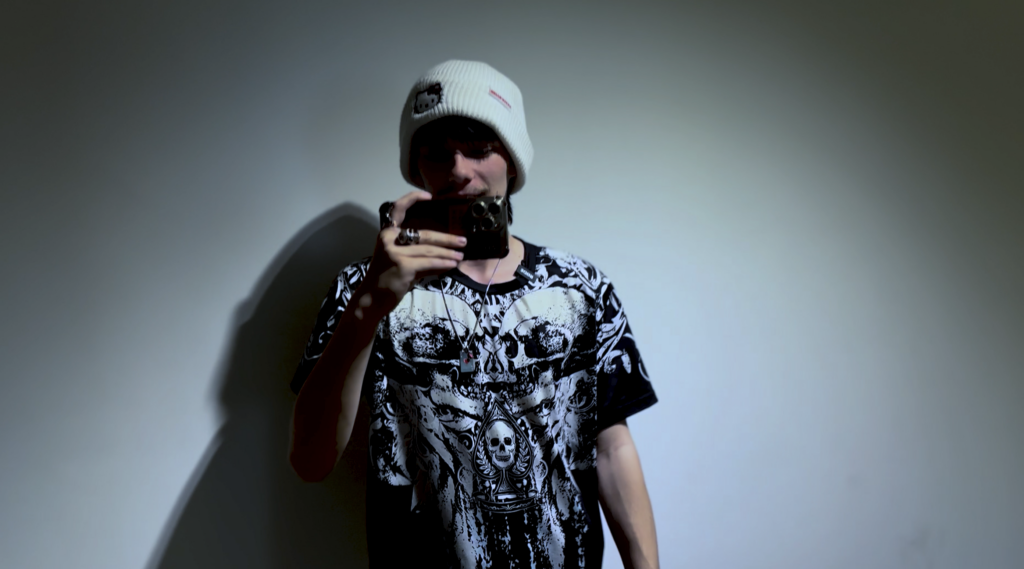
I then uploaded the first video onto YouTube for it to gain views and i got some of my friends to comment on it to give it realism.
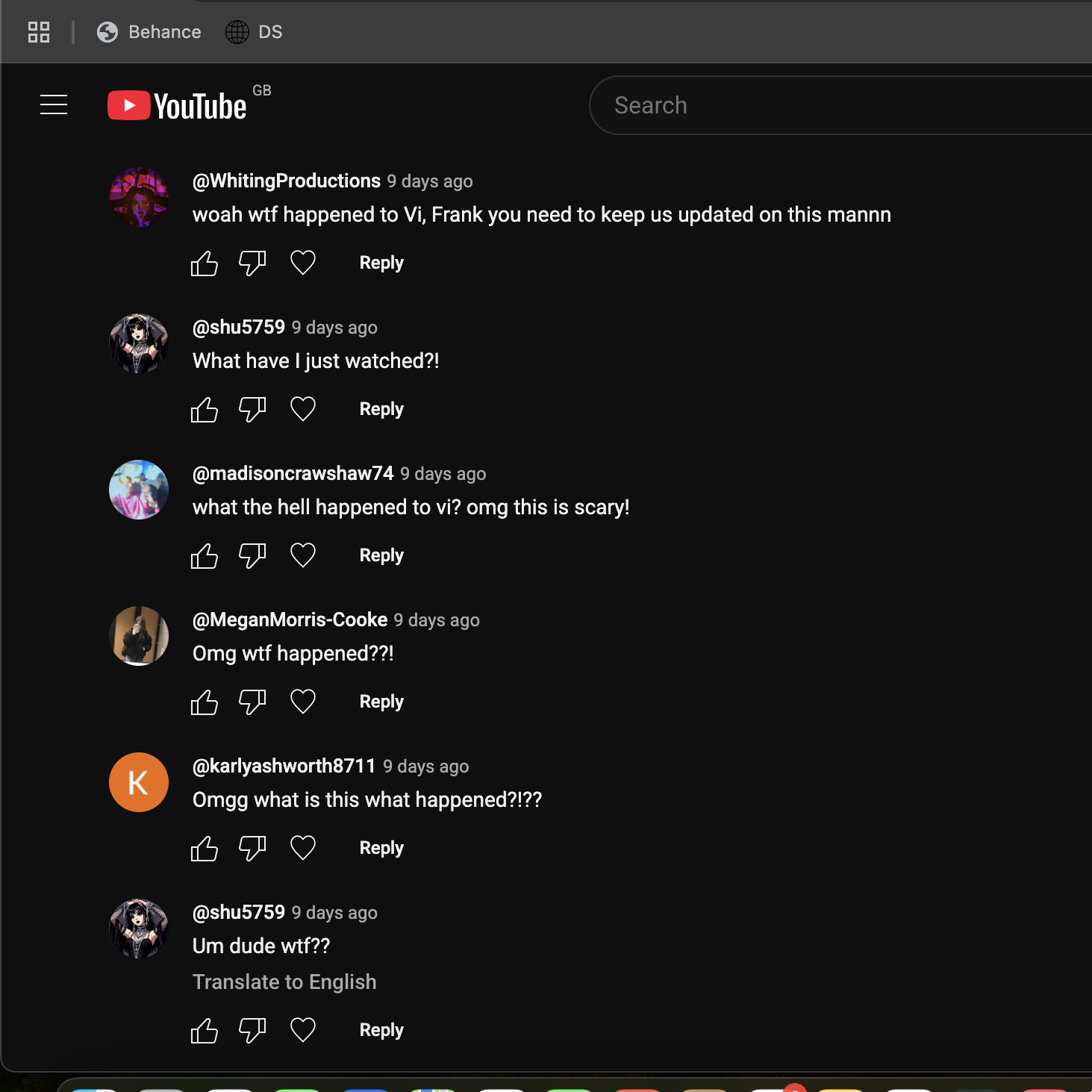
Next, i edited the Dexter Manning episode. For this section of the film, i aimed to replicate the look and feel of a Channel 4 broadcast. I began by downloading a clip of the ‘HollyOaks’ end credits from YouTube for reference.
To recreate the Channel 4 Up Next ident, I followed Henry’s evaluation video from his last FMP as a guide. Using Adobe Express, I imported a gradient loop I found on YouTube and left a section in solid green, which I later masked out in Premiere Pro. Following Henry’s approach, I used the same font as he did, ‘DIN Medium’, to stay consistent with the Channel 4 style.

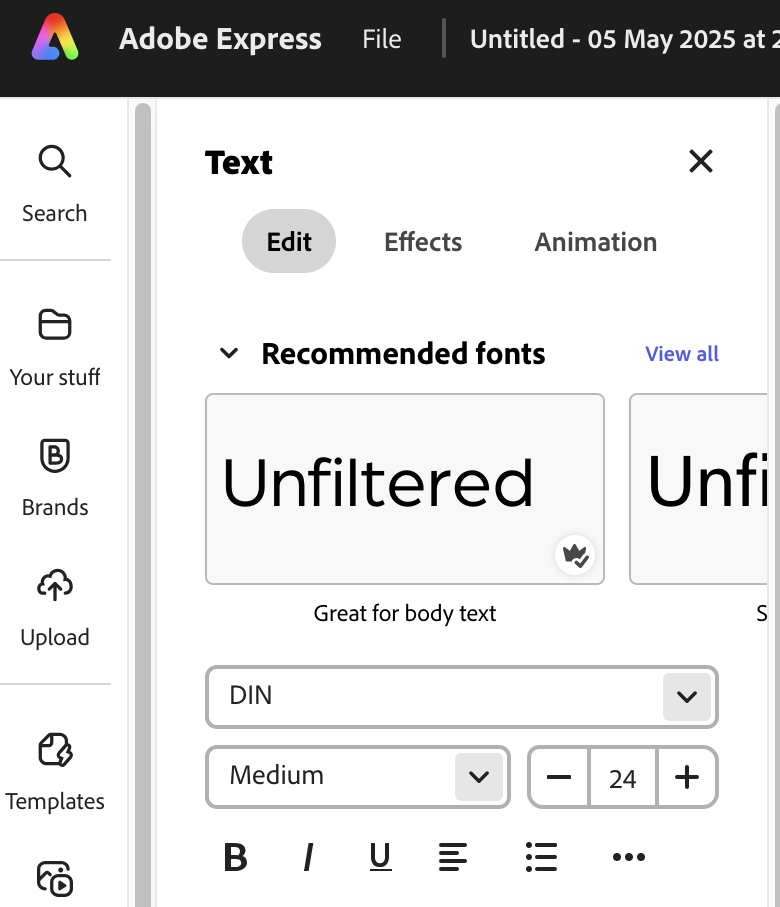
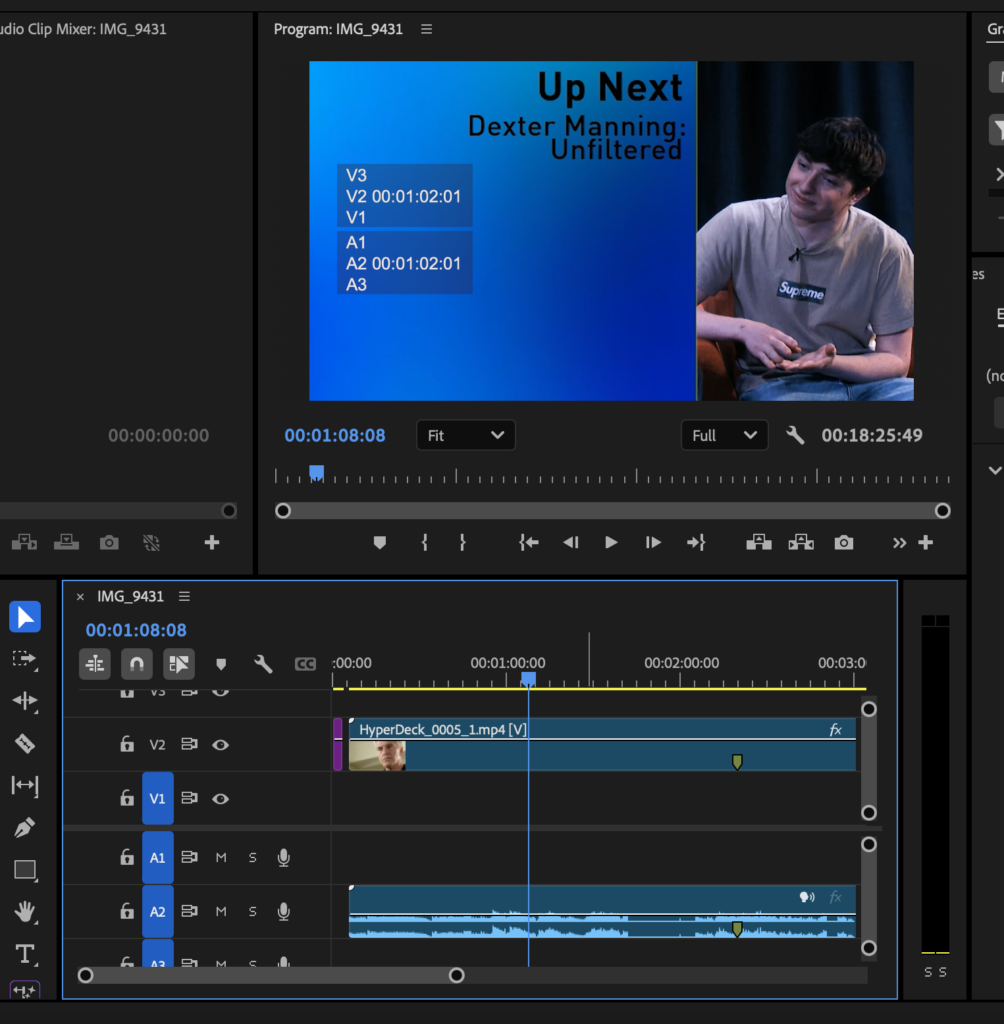
I then used a clip from ‘Gogglebox’ to create the second Up Next Ident, and did the same thing in adobe express for this one.
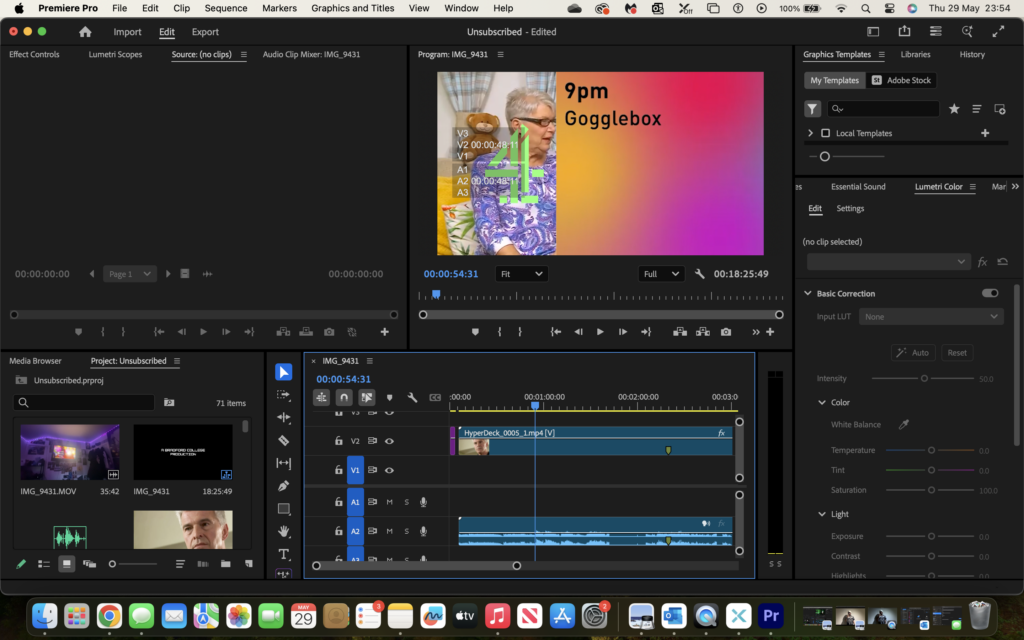
I then imported the footage of the Henry and Jacob, i made the video glitch out by freeze framing the video and duplicating the audio to repeat itself, giving it a glitching effect.
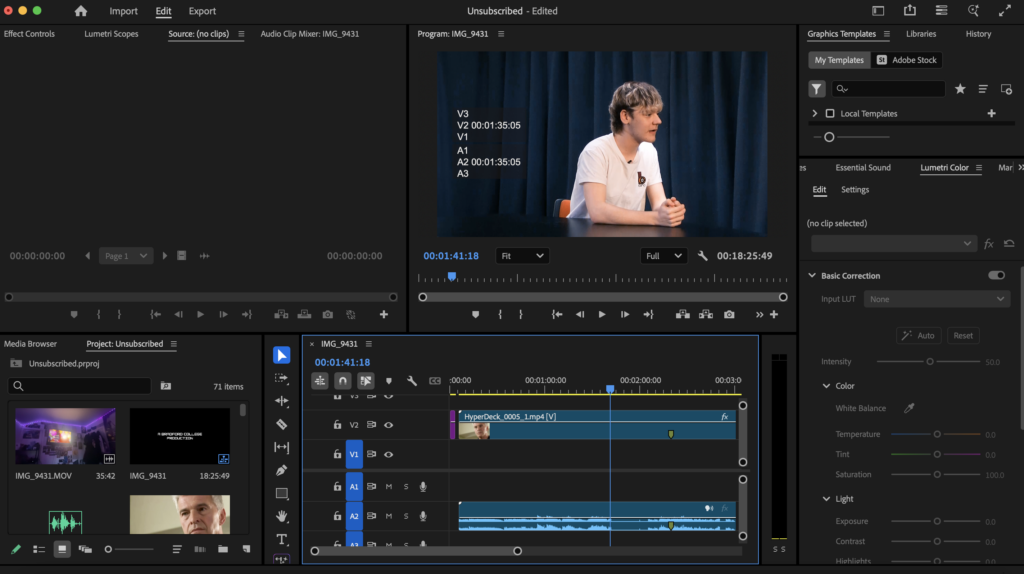
I then recreated a technical difficulties screen and had Ems voice over play over it, following along with channel 4 ident music.
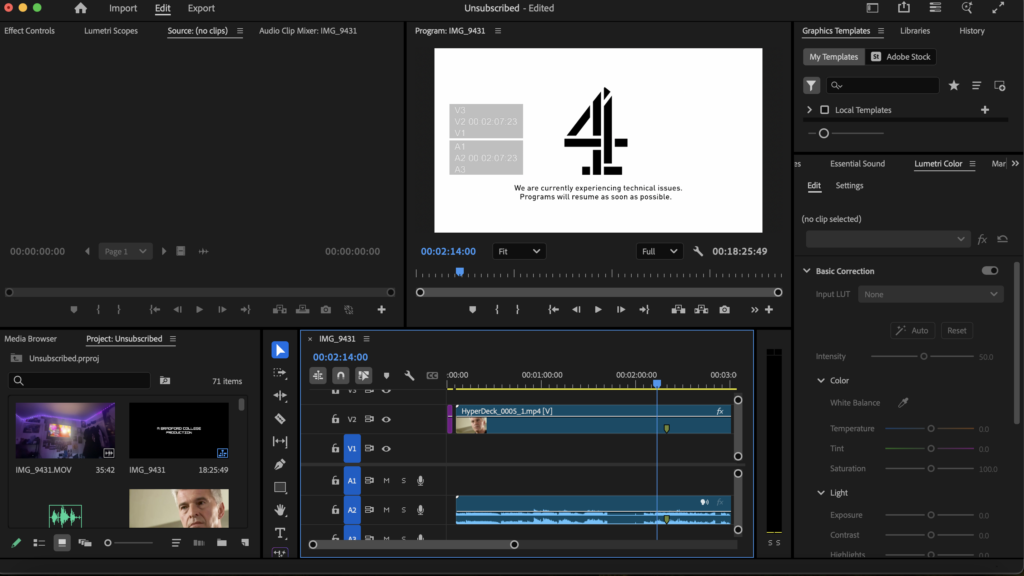
I then recreated a SONY TV no signal graphic, i did this by taking a photo of it from my tv and found similar fonts, and same colour gradients using adobe express.
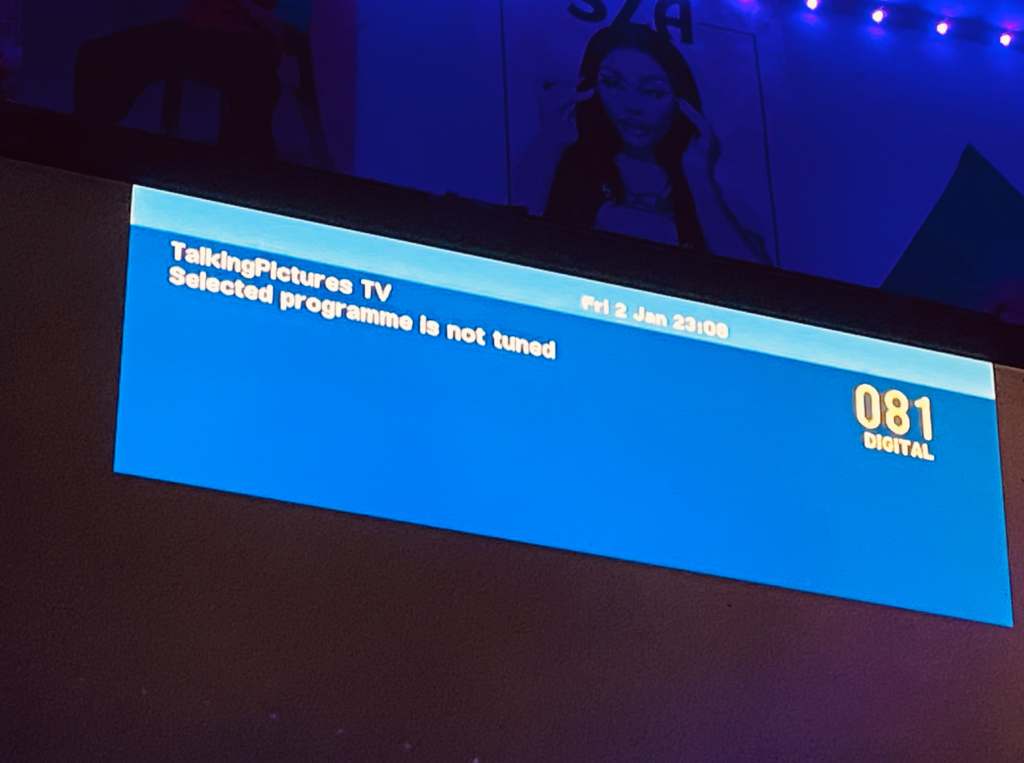

I then showed the technical difficulties ident again, but this time with Em’s voice sounding distressed and frightened. Since Em didn’t want to record herself screaming, I downloaded a female screaming sound effect from ‘Pixabay’ to convey the fear and the movement of her being dragged away from the control panel.
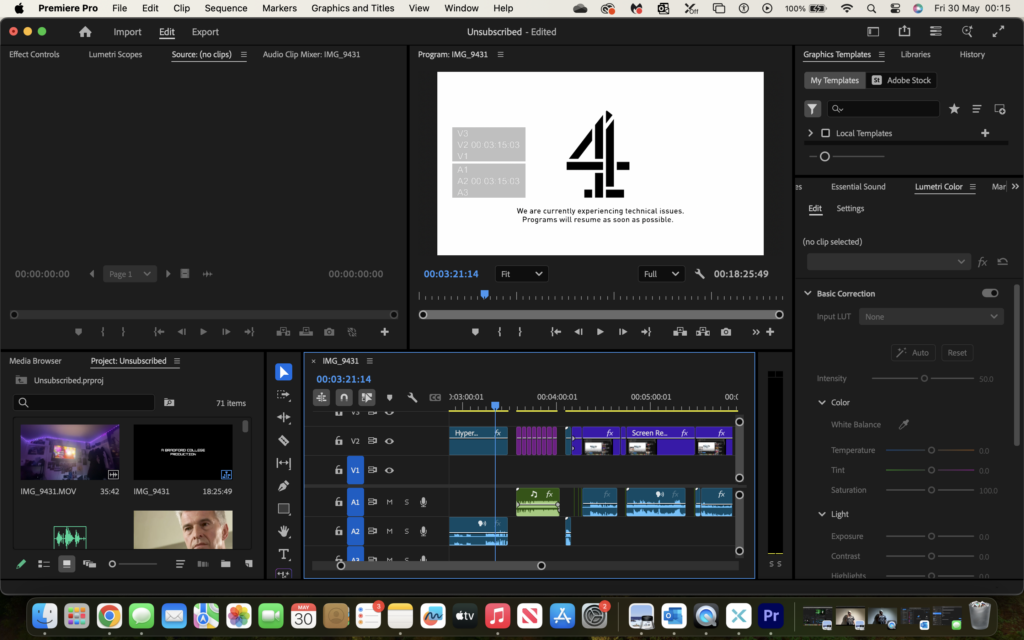
I then created the open credits on ‘Canva’ using the font, ‘HK MODULAR’, and had them playing over the opening song i chose, ‘Black Cat (Alt Take)’ by ‘London After Midnight’.
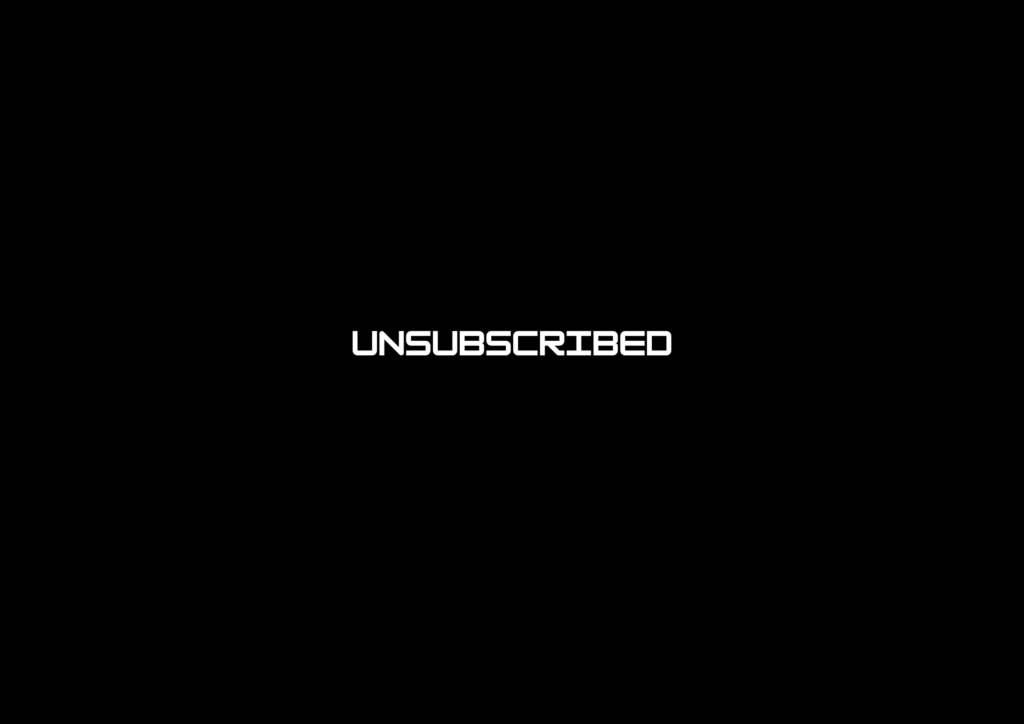
I then used a mac starting up screen and faded in a screen recording of my mac screen loading onto FrankInTheOcean YouTube Channel.

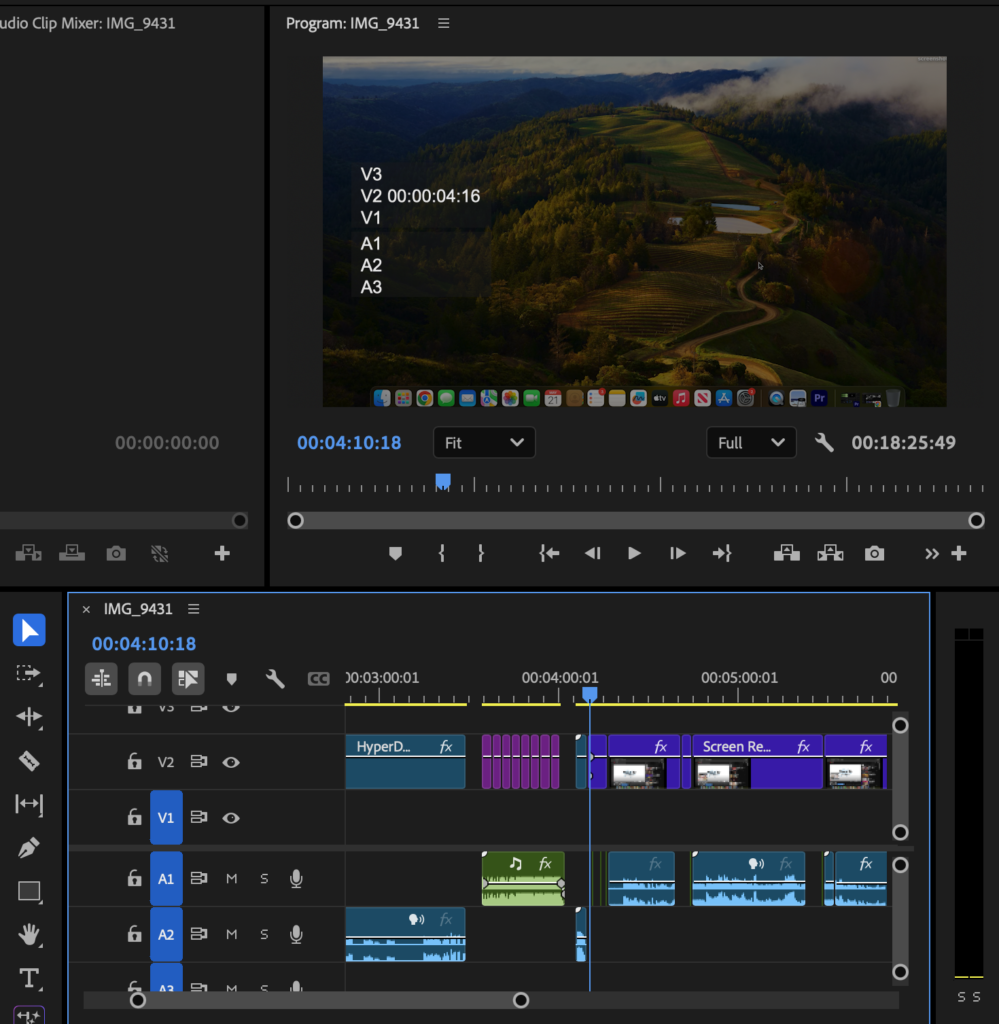
I then changed the views and subscribers of the channel by using inspect element before i started screen recording.
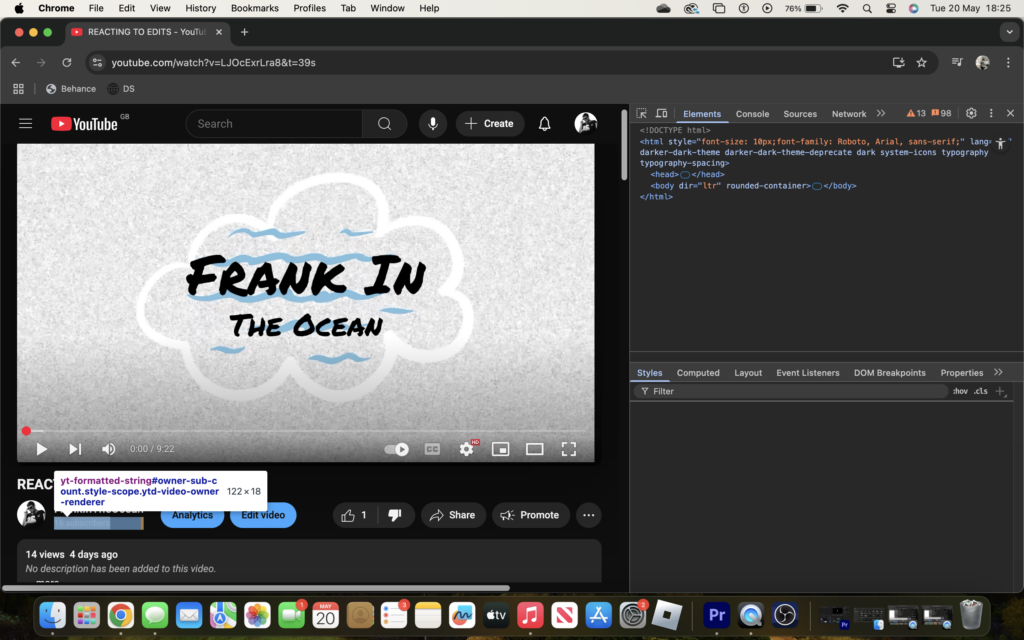
When i cut the screen recordings together, started moving around the mac screen on the screen recordings, following the mouse using scale and changing the position with keyframes within Premiere Pro.
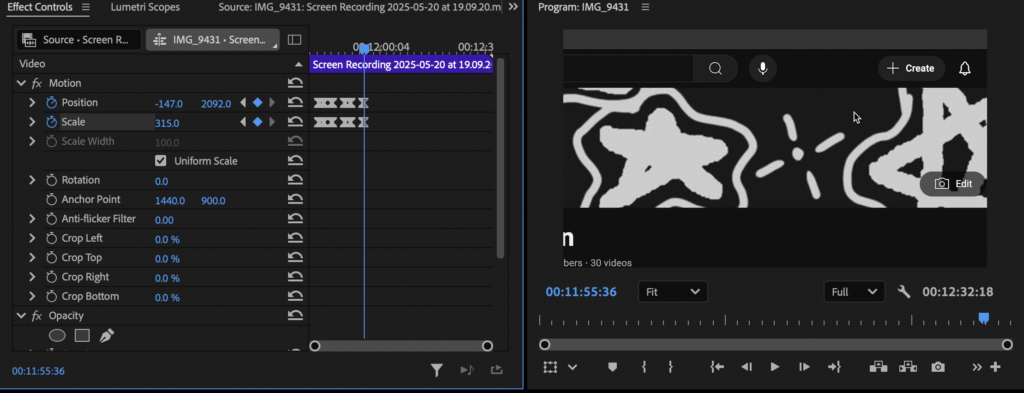
I then created the end credits in ‘Canva’ using the same font as the opening credits.
Promotion
For promotion, I had asked my fellow classmate Harley, if he could illustrate the poster for me, and he created this.
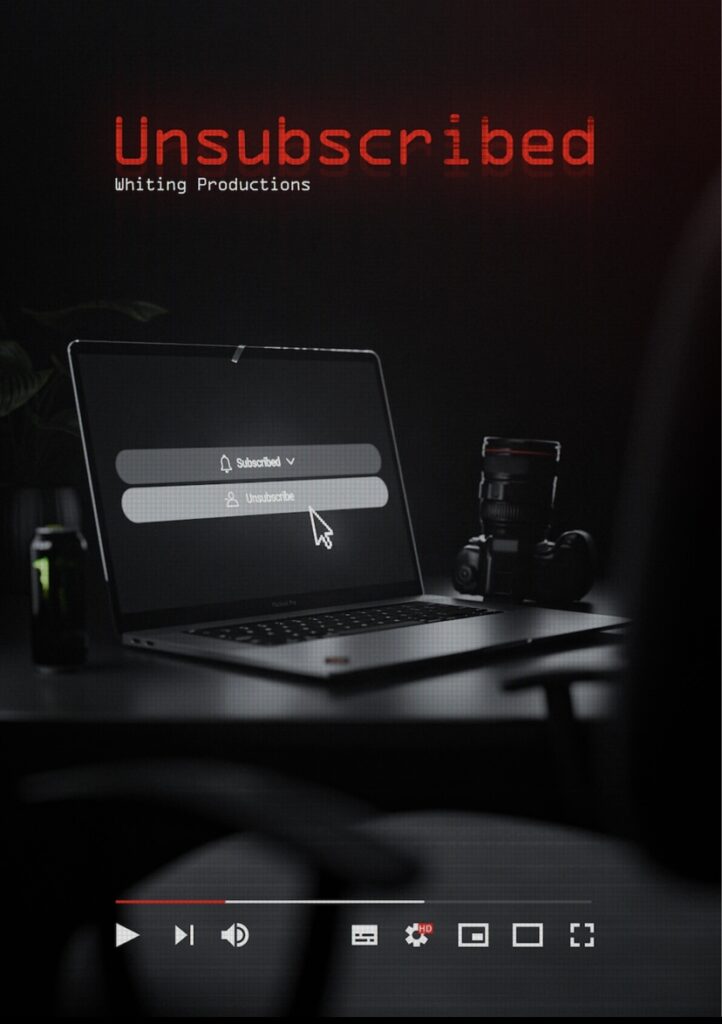
Final Production
Final Evaluation & Reflection
Overall, i found that the project ran much more smoothly and efficiently than i had anticipated.
The concept of creating a found footage film stemmed from my long standing interests in the genre. Recently, I’ve been binge-watching the ‘Paranormal Activity’ film series, which served as a major source of inspiration. The idea of setting the story in a haunted, abandoned TV studio was influenced by the Halloween live special of ‘Inside No. 9’, which features a BBC-style broadcast that gradually unravels with glitches and audio dropouts.
Task 1
The concept for the film didn’t require extensive planning, as I had already been developing the idea in my mind even before the project officially began. Alongside this, I had a few other concepts in mind, but the found footage approach stood out to me the most. I chose this style because I wanted to push myself creatively and technically, to challenge my storytelling abilities and see if i could successfully capture the raw, immersive feel that defines an effective found footage film.
Presenting my project was nerve wracking, as it usually is with any presentation, but this time it felt much smoother and more natural. I noticed a boost in my confidence, and I felt more comfortable and expressive while speaking compared to previous presentations.
Task 2
During my research, I took the initiative to learn more about the various types of equipment used in the film industry, such as cameras, microphones and props. This exploration was especially valuable, as it gave me a clearer understanding of what tools are considered effective and professional in filmmaking, and which ones may be less reliable or outdated. It helped me make more informed decisions when planning and executing my own project.
I also researched various camera angles and shot types, including visual examples to reference. This was particularly helpful, as it gave me a better understanding of how different shots can be used to enhance specific types of scenes and convey particular emotions or perspectives. It allowed me to be more intentional with my cinematography choices during the project.
While researching influences for my film, I explored three different sources of inspiration, each contributing to a different aspect for the project.
One key influence was the film ‘Followed’, which I had watched a few weeks prior to starting this project. The story follows a YouTuber and his crew as they explore a haunted hotel in hopes of gaining more subscribers and securing sponsorships to support his family. This concept directly inspired the storyline of my own film, which centres around a YouTuber and his team visiting an abandoned TV studio with the goal of reaching one million subscribers.
I also drew inspiration from the ‘Paranormal Activity’ film series, particularly in how it presents the found footage style. The way the series builds tension through subtle, realistic camera work helped guide my approach to creating believable and immersive found footage experience in my own film.
Another significant source of creative influence came from the Halloween Special episode of the BBC series ‘Inside No.9’, a show I’ve long been interested in, particularly this episode. It presents a seemingly live broadcast of a brand new ‘Inside No.9’ episode, but things quickly begin to go wrong: the audio cuts out, the visuals glitch, and the screen repeatedly switches to a “technical difficulties” message. Eventually, the broadcast abruptly shifts to eerie CCTV footage from behind the scenes of the studio. This concept really stood out to me, and i wanted to incorporate something similar in my film. The idea of a haunted TV studio combined with a broadcast slowly falling apart intrigued me, as it effectively foreshadows that supernatural forces are interfering with the signal, creating a blend of realism and horror that enhances the atmosphere.
The planning process was fairly straightforward. I created a Snapchat group chat with everyone involved in the film to keep communication clear and organised. We held a group call where i assigned each person their role, followed by an in-person meeting at college where i handed out scripts two weeks before filming. This gave everyone enough time to learn their lines and get comfortable with the characters they would be portraying.
I then coordinated with the cast to find dates that worked for everyone, making sure to accommodate everyone’s schedules. Once the filming dates were confirmed, i created a filming timetable and shared it in the group chat so everyone knew exactly when they were needed to be on set. Overall, the process went smoothly, as everyone was cooperative and committed, and there were no concerns about last-minute cancellations.
Task 3
Production went smoothly, just as I had anticipated, thanks to the cast and crew being reliable and punctual. On the first day of filming, we focused on capturing all the scenes that didn’t require makeup or special effects. This allowed us to work efficiently and save the more complex scenes for later.
A week later, we returned to college to film the more intense sequences, including the oujia board scene and the character’s death scenes. For these, I collaborated with two media makeup students, Karly and Sophie, who applied special effects makeup and fake blood to the actors. Their work was fast and effective, as each application took around 10 minuets, which helped us stay on schedule and complete filming without delays.
Two weeks before filming began, I booked out the cameras in advance and stored them in the TV studio so they would be ready for use on shoot days. However, I had to adapt to a few unexpected technical issues. One of the cameras was missing a lens, making it unusable, and the second camera ran out of battery halfway through filming a scene. To keep production moving without delay, I quickly switched to using an iPhone to capture my character’s point-of-view shots. This worked well, especially since the rest of the cast were already using their phones for their own footage, which maintained the consistency of the found footage style.
This created a minor challenge during the editing process, as the quality difference between the footage shot on the camera and the iPhone was quite noticeable. To maintain visual consistency, I used Lumetri Colour in post-production to adjust and match the footage. I focused on customising the saturation, contrast, and highlights to bring the iPhone clips closer in tone and quality to the camera footage, helping create a more seamless viewing experience.
The editing process was a bit stressful at times, especially when I was designing and refining professional-looking branded graphics to enhance the realism of the film. I spent a lot of time creating and recreating these elements to get them just right. Fortunately, with the help of Henry, I was able to successfully recreate a Channel 4 ident and a realistic Sony TV “no signal” screen. These additions helped strengthen the broadcast feel of the film and added authenticity to the found footage style.
The screen recording segments in my film were inspired by the opening scene of ‘Nerve’, which features a Mac screen navigating through various applications. I aimed to recreate a similar effect by capturing screen recordings of myself opening YouTube and clicking through the videos on the ‘FrankInTheOcean’ YouTube channel. To bring this sequence to life, I used keyframes to adjust the scale and position of the footage, creating smooth zoom-ins and pans that made the navigation feel dynamic and engaging. This technique helped add a layer of realism and interactivity to the found footage experience.
Overall, i feel this has been my strongest project so far, as it really allowed my skills and strengths to shine. My directing abilities, in particular, improved significantly during this project. I believe this was largely because I was working with people I knew and trusted, which gave me the confidence to take creative control and guide them in delivering the film exactly as I envisioned it. Their reliability helped ease the pressure and made the process smoother. I’m really proud of how everything came together and genuinely happy with the final result.
Harvard Referencing
MasterClass. (2020). What Is a Wide Shot in Film? How Directors Use Wide Shots in Filmmaking – 2024 – MasterClass. [online] Available at: https://www.masterclass.com/articles/what-is-a-wide-shot-in-film-how-directors-use-wide-shots-in-filmmaking.
“How to Use Medium Shots in Your Films.” Backstage.com, 14 Apr. 2023, www.backstage.com/magazine/article/medium-shot-film-definition-examples-76159/.
Dudley, Joshua . “Close-up Shots, Explained: Everything Directors + Actors Should Know.” Backstage.com, 25 Apr. 2022, www.backstage.com/magazine/article/close-up-shot-explained-directors-actors-how-to-75033/.
NFI. “Point of View Shot – Everything You Need to Know.” NFI, 29 Dec. 2021, www.nfi.edu/point-of-view-shot/.
Straub, Jakob. “What Is a Tracking Shot? Definition & Examples | Boords.” Boords.com, 9 Nov. 2022, boords.com/blog/what-is-a-tracking-shot-definition-and-examples.
“Filming 101: Types of Camera Shots and Angles.” PolarPro, 22 Nov. 2024, www.polarpro.com/blogs/polarpro/filmmaking-101-types-of-camera-shots-and-angles?srsltid=AfmBOooG7qHAhiP8e7oIamYu7b31qxalPZysWH6B4tCBUOJwD5Z801l7. Accessed 3 Apr. 2025.
“Top Cameras for Beginner Filmmakers | Sony, Canon, & More.” Moment, 26 Feb. 2025, www.shopmoment.com/articles/top-cameras-for-beginner-filmmakers-sony-canon-blackmagic-more?srsltid=AfmBOor_sPsMgz2Bwilcp0GUtJhCHX3JFXIqPdIndNnUJKLnZnuFnfMK. Accessed 3 Apr. 2025.
Eva. “The Best Microphones for Filmmaking: The 2020 Guide.” Filmstro, 12 May 2020, filmstro.com/blog/best-microphones-for-filmmaking/.
Winter, D. (2024). The Symphony Behind the Screen: Understanding the Impact of Soundtracks in Film. [online] lwks.com. Available at: https://lwks.com/blog/the-symphony-behind-the-screen-understanding-the-impact-of-soundtracks-in-film.
ScreenSkills (2022). Producer in the film and TV drama industries. [online] ScreenSkills. Available at: https://www.screenskills.com/job-profiles/browse/film-and-tv-drama/development-film-and-tv-drama-job-profiles/producer-film-and-tv-drama/.
Devereux, B. (2023). The Importance of Lighting in Film Production. [online] Koncept Innovators, LLC. Available at: https://glidegear.net/blogs/news/the-importance-of-lighting-in-film-production?srsltid=AfmBOooTIkN-DAySwXCoiR-h-8cZWTwXs6Tn9eEXjh8h8-Vn3RKBp3Ev [Accessed 30 Apr. 2025].
MasterClass (2020). What Is Three-Point Lighting? Learn About the Lighting Technique and Tips For the Best Three-Point Lighting Setups – 2024 – MasterClass. [online] MasterClass. Available at: https://www.masterclass.com/articles/what-is-three-point-lighting-learn-about-the-lighting-technique-and-tips-for-the-best-three-point-lighting-setups.
ScreenSkills (2022a). Director in the Film and TV Drama Industries. [online] ScreenSkills. Available at: https://www.screenskills.com/job-profiles/browse/film-and-tv-drama/development-film-and-tv-drama-job-profiles/director-film-and-tv-drama/.
I confirm that the attached portfolio is all my own work* and that any work created by anyone other than myself, including AI-generated content, has been appropriately referenced.